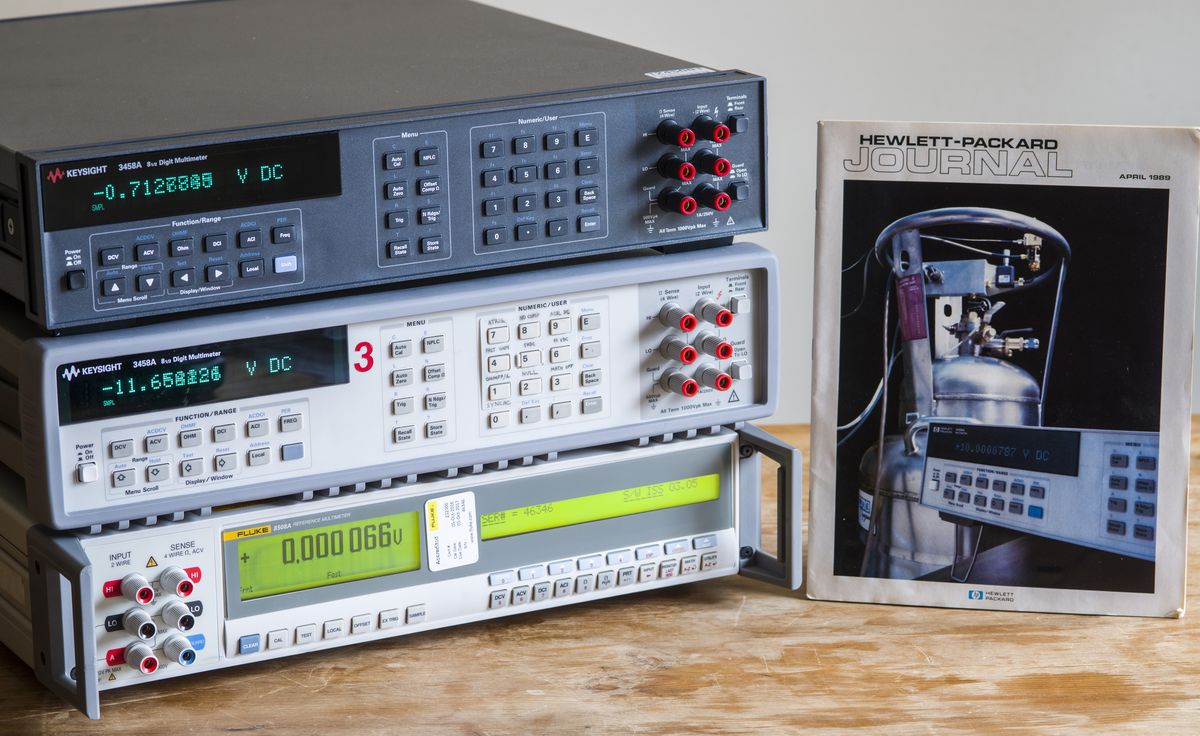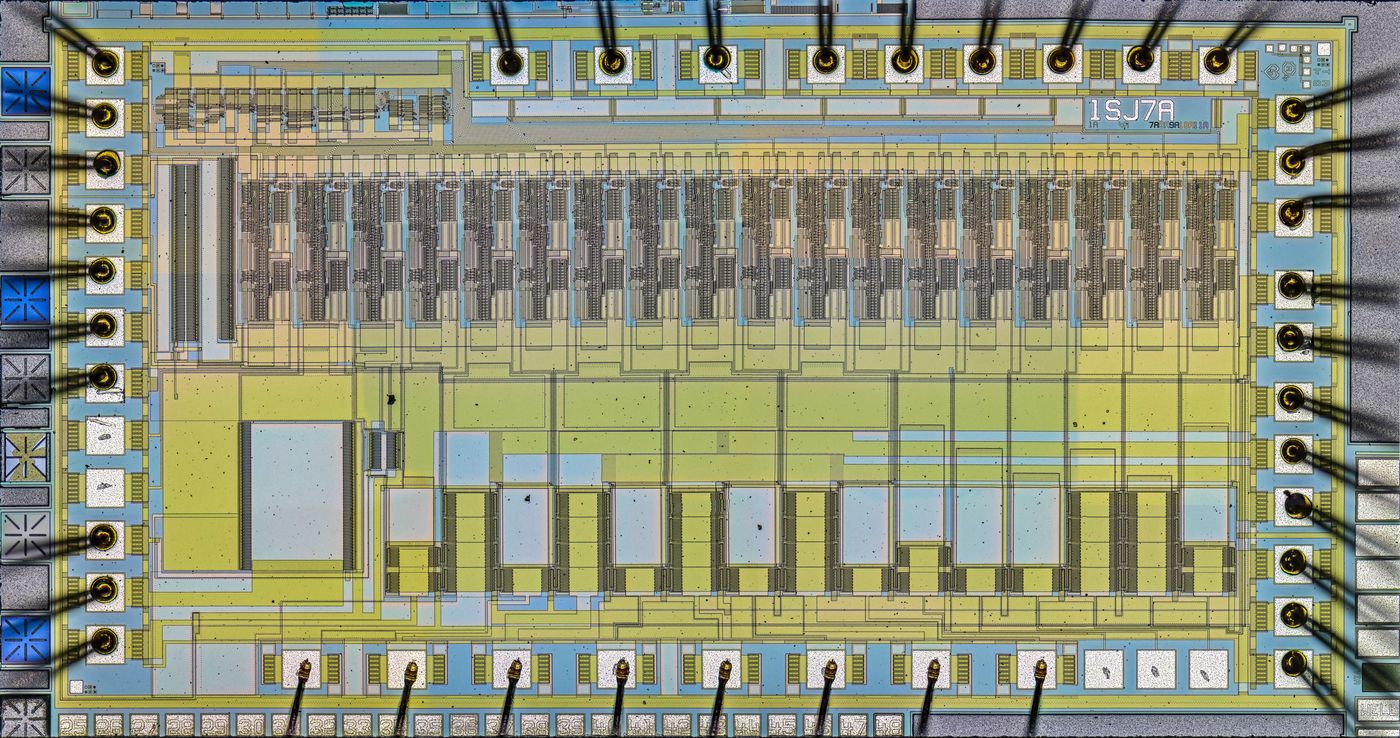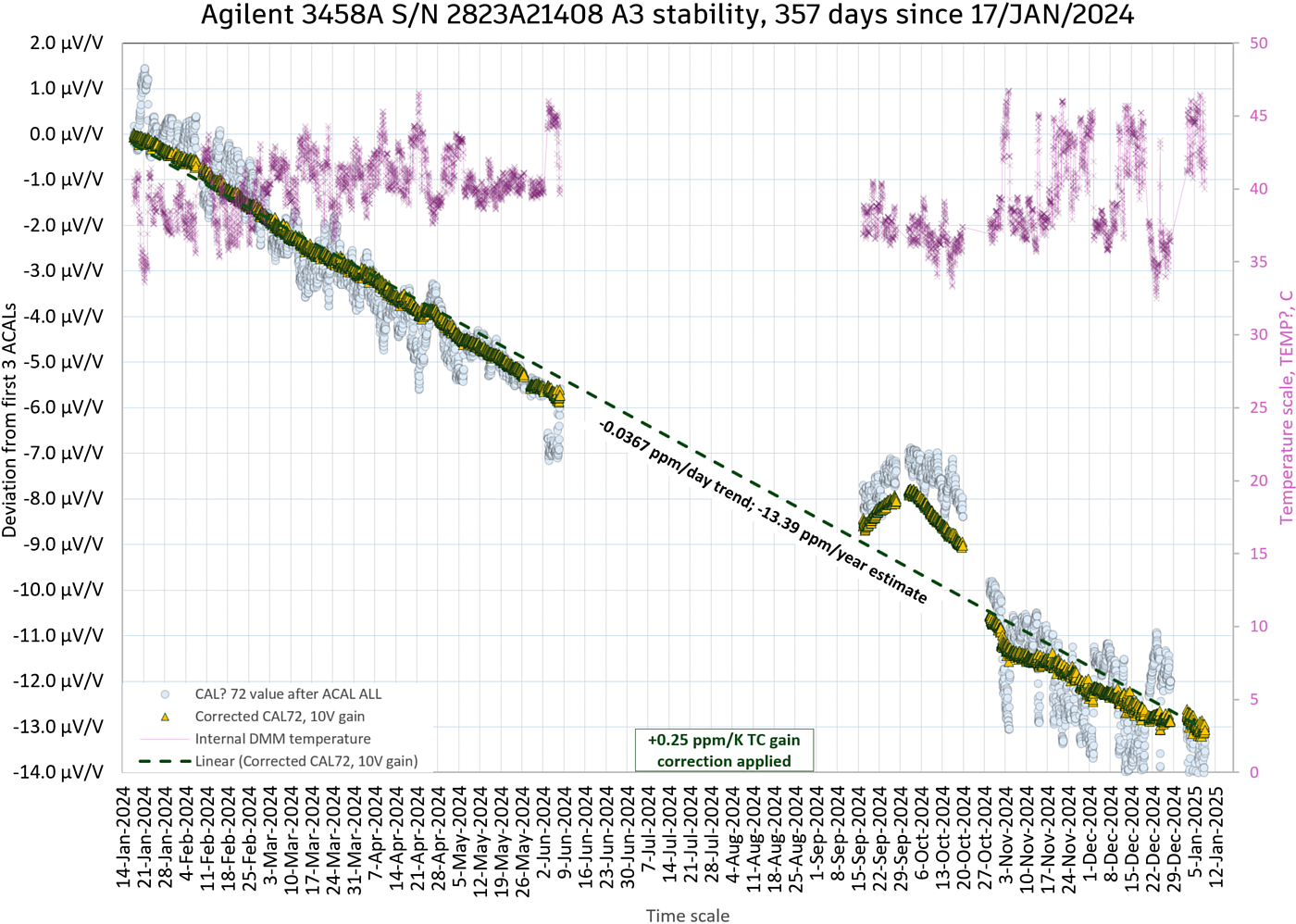- Introduction and motivation for this guide
- Disclaimer
- Manuals references
- Initial inspection and preparation for the service
- Checklist for full refurbishment of HP/Agilent 3458A DMM
- Standard components BOM for service needs
- Repair process and testing 3458A caveats
- ADC assembly long-term drift issue and HP Service Note 18
- Improved xDevs X18 drift stability performance test and guidelines
- Stability test X18 method results, charts and conclusions with specific instruments
- HP3458A S/N 2823A13345 – modified A9
- HP3458A S/N MY45040325 – modified A9
- Keysight 3458A S/N MY4505XXXX – 2016 year
- HP3458A S/N 2823A04310 – 1990 year
- HP3458A S/N 2823A20931
- HP3458A S/N 2823A17282
- Agilent 3458A S/N 2823A21408
- HP3458A S/N 2823A037XX – Option 002 unit from 1989
- HP3458A S/N 2823A18613
- Experimental 3458A, 2xADR1000 ×9-D reference
- Final criteria of performance based on xDevs.com X18 improved logging and analysis process
- Keysight service agreement and repair services
- Calibration and performance verification
- Repaired instruments worklog summary
- Summary and conclusion
Introduction and motivation for this guide
Many passionate engineers love to tinker with electronics and test equipment in their labs, building, measuring, fixing things. Many of these common tasks require some kind of laboratory benchtop power supply, oscilloscope, digital multimeter. Thanks to recent progress with the right to repair we have more people starting small repair shops and trying to fix their stuff, instead of polluting the environment with toxic and hazardous electronics waste.
Right for repair advocates for the fair access to existing service and maintenance information and documents, calibration tools and binaries for firmware updates, as well as fair access to parts for customers and independent shops. Right for repair does NOT seek for IP or trade secret disclosures, design hardware or firmware/software source files and NOT demand manufacturer to provide customized proprietary components to Digikey store at BOM cost. In many cases there is no need for any of that internal and confidential materiel to repair the common issues like a bad capacitor or damaged connector in the power supply. In reality not clouded by corporate lawyers, repairing most of the consumer and test equipment electronics is often possible with pretty basic measuring tools such as 20$ handheld DMM if we just have basic schematics and have access to buy common or mechanical parts.
And typical myth that everything will be copied and stolen when schematics is published is simply untrue for any of modern complicated test equipment. We have Hewlett-Packard DMMs schematics from 1980s already readily available for decades, yet nobody cloned or produced even a simplified copy of these DMM. It should not be normal or acceptable when a customer with brand new 7½-digit DMM paid in full 4500 USD get denied requested (also paid!) calibration or repair service for it, just because the customer is not working in Fortune 500 corporation. Also modern equipment is filled with FPGAs, heavily integrated processors and software stacks that even if one was dedicated enough to make hardware replica of the product from a published schematics, they wouldn’t be able to do anything with it anyway without the access to firmwares and deep understanding of design implementation.
Those who work with analog electronic circuits and devices may often need more precision and resolution to properly verify functionality of sensors, ADC/DACs and various related design blocks. Such people often have nice benchtop digital multimeters such as HP 34401A, Fluke 8842A or Keithley 2000. These older instruments provide more than 5 digits of useful resolution and can be purchased for $100-300 from the used equipment market. Having such resolution is quite handy for troubleshooting shorts, checking accuracy, stability and noise of the circuit. Replacing these old DMMs with something modern like Keysight 34465A or Keithley DMM6500 in many cases does not bring very much of ultimate electrical performance improvement for day to day lab work.
But there is also a very small percentage of homelabs which get infected with volt-nutting rabbit hole and become obsessed with longest resolution and lowest noise voltage/resistance/current measurements possible. You call people with such hobby in the middle of the night and ask about LTZ1000A typical long-term drift and they will tell you an hour story that boils down to “hmm, depends…”. It is quite expensive hobby on it’s own too and can be even without much of the practical or commercial need to have all that capability. These people often surround themselves with expensive arcane instruments such as Keithley 2001, 2002, Datron 1281, various high-performance calibrators, artifact standards and alike.
King of all DMMs and item of great desire of many laboratories without much doubt is HP/Agilent/Keysight 3458A 8½-digit unit. It is used as linearity standard and calibration reference in many world-class national and commercial laboratories thanks to it’s excellent performance proven by 38 years of record history across thousands of instruments. These DMMs are so well received than even competitor Fluke had a special product model called Fluke/HP 3458HFL until Fluke gobbled up Datron Instruments and redesigned 8½-digit 1281 into their own Fluke 8508A DMM. 3458HFL was a specially selected 3458A carefully verified and built by HP for the Fluke with bit tighter specifications and better stability LTZ1000A-based reference. Hardware design of these special 3458HFL is identical to standard HP 3458A otherwise. xDevs also repaired one of these before .
xDevs team and our friends repaired and tested more than 30 of these 3458A’s in last 10 years with all the variable conditions from 35 year old flooded rusted HP early units up to current RoHS black-style Keysight 3458A manufactured in late 2022. Some of these projects are covered in previous site articles here , here , here and here . Main and first repair 3458A article was done in year 2015 with detailed worklog covering repair and upgrades. All this generated a lot of “repair and performance wisdom”. This article goal is to share some of that with fresh new owners of used 3458A to guide them in the good direction to obtain good and happy 8½-digit DMM as result. We will not go too deep into details and specifics in this guide, but rather provide the overview and some common experiences.
While this article focus with typical issues and refurbishment of decades-old HP and Agilent instruments some of this information might also apply even for latest black Keysight units as they age. Keysight started manufacturing updated RoHS black plastic instruments in December 2019. Black RoHS edition instrument serial numbers started from MY59350000 and currently manufactured by Keysight factory in Penang, Malaysia. There are also multiple options and some special versions of 3458A available as well.
| Option | Description | Status |
|---|---|---|
| 3458A-001 | Extended memory option | Standard now for RoHS DMM, but optional for older white units |
| 3458A-002 | Improved DC reference stability 4 ppm/year | Available for extra $US 1.4k |
| 3458A-E02 | Special version | Special SKU |
| 3458A-H01 | Special 1000 Vrms ac maximum input voltage | Available for extra $US 1.5k |
| 3458A-H06 | Unknown | Unknown |
| 3458A-H11 | Special PASS/FAIL BNC output connector | Contact Keysight for special order |
| 3458A-H52 | US Air Force NSN | Special SKU for military customers |
| 3458A-HFL | Fluke version 3458A/HFL with 2ppm/year stability and better resistance | Obsoleted in 2019 |
| 3458A-OGC | Precision calibration, intended for metrology use only | Standard unit with $US 2.7k special calibration at Keysight primary lab |
| 3458A-700 | CIIL language option | |
| 3458A-907 | Front handle kit | $73 USD |
| 3458A-908 | Rack flange kit | $50 USD |
| 3458A-909 | Rack flange and front handle set | $111 USD |
Table 1: HP/Agilent/Keysight 3458A options and versions
Here are details how to determine installed options in each specific unit (besides looking at option labels/stickers). Option 001 (extended memory) units will return a 1,0 when queried with an OPT? command, either from front panel or GPIB. All new meters come with this option as standard (always enabled). Option 002 (high stability 4ppm/year reference – this option can be bought by ordering kit 03458-80003, around $1400 USD extra) can be checked by checked box on rear panel or verified by label on A9 PCBA under top inguard shield. The RoHS 002 A9 assembly is labeled 03458-66549 (the A9 assembly in a standard unit is labeled 03458-66539). Even better HFL 2ppm/year stability reference option, standard option for rare Fluke/HP 3458A-HFL version is not available anymore and obsoleted for the the new RoHS meters.
Option H01 (1000 Volt ACV measurement capability – Standard units are limited to 700 Volt RMS for ACV) – about 1500 USD extra.
These are the instruments that were verified to properly operate and calibrated with maximum 1000 V voltage at AC voltage. Hardware in these is the same but due to selection process and qualification done at higher voltages custom part numbers were assigned instead of standard. On old units’ part-numbers used for this option are:
- The A1 assembly is labeled 03458-91002 (the A1 assembly in a standard unit is labeled 03458-66501 or 03458-69501).
- The A2 assembly is labeled 03458-91000 (the A2 assembly in a standard unit is labeled 03458-66502 or 03458-69502).
- The A10 assembly is labeled 03458-91001 (the A10 assembly in a standard unit is labeled 03458-66510).
New units most likely to bear updated different PCBA part numbers as well.
This guide tailored more for enthusiast and hobby owners, who are cost-sensitive but still like to join the gamble game to obtain good 3458A. If you are in need of the guaranteed and calibrated instrument your best option would be to bring the gold to Keysight for the latest variant of the 3458A with some extra budget for annual service agreement and periodic annual calibrations for the unit.
Disclaimer
Redistribution and use of this article or any images or files referenced in it, in source and binary forms, with or without modification, are permitted provided that the following conditions are met:
- Redistributions of article must retain the above copyright notice, this list of conditions, link to this page (/fix/hp3458a/) and the following disclaimer.
- Redistributions of files in binary form must reproduce the above copyright notice, this list of conditions, link to this page (/fix/hp3458a/), and the following disclaimer in the documentation and/or other materials provided with the distribution, for example Readme file.
All information posted here is hosted just for education purposes and provided AS IS. In no event shall the author, xDevs.com site, or any other 3rd party, including HP/Agilent/Keysight be liable for any special, direct, indirect, or consequential damages or any damages whatsoever resulting from loss of use, data or profits, whether in an action of contract, negligence or other tortuous action, arising out of or in connection with the use or performance of information published here. This guide is not official recommendation or endorsement from manufacturer.
If you willing to contribute or add your experience regarding HP/Agilent/Keysight instruments repairs or provide extra information, you can do so following these simple instructions
This article is developed based on non-commercial applications and use of various second-hand 3458A DMMs obtained from places like eBay or similar, and contains lot of unofficial AS IS information not endorsed or supported by Keysight Technologies. Keep this in mind when using any of the material from this article.
Manuals references
A User’s Guide to Keysight 3458A Front Panel Operation
3458A Multimeter User’s Guide, Edition 7
Keysight 3458A Multimeter datasheet
Agilent 3458A : Quick Reference Guide, Edition 2, Dec 2000
3458A Multimeter Calibration Manual, Edition 7
3458A Multimeter Calibration Manual, Edition 6
There is also number of service notes/engineering changes were published during years of 3458A’s lifecycle. If your unit is old, worth to check if any of them required to do.
Service note 3458-01C : A/D Linearity Improvement
Service note 3458-04A : Apparent failure at turn-on or when given a “RESET” command
Service note 3458-07B : Modification to Fix Intermittent Error “Multislope Rundown Conversion”
Service note 3458-08A : Incorrectly Labeled Line Voltage Switches May Cause Switch Setting Confusion
Service note 3458-10A : 3458A Documentation Available As “On-Line” Files
Service note 3458-12B : Outguard Firmware Upgrade: Enhancements, Fixes, & Changes
Service note 3458-12C : Outguard Firmware Upgrade: Enhancements, Fixes, & Changes
Service note 3458-13A : GPIB Communication Failures Using the 3458A
Service note 3458-14B : Calibration Error After Power “On” or After an “ACAL”
Service note 3458-17 : Errors May Occur if ACAL AC is Initiated From the 4-Wire Ohms Function
Service note 3458-20 : Bad SRAM causing Cal Ram batteries to fail prematurely
Before starting any repair, good idea to read thru repair manuals, to get idea of board functions and purpose. HP has both assembly and component level repair manuals, which include full schematics and board assembly drawings. AFAIK it’s the only 8½ DMM which have complete schematics. I still remember repair efforts and countless hours without schematics, deciphering circuitry in Keithley 2001 DMM back ten years ago.
3458A Multimeter Assembly Level Repair Manual, Edition 2
3458A Multimeter Component Level Repair Manual
Can also recommend the excellent book Sampling with 3458A written by recognized metrologist Rado Lapuh, covering 3458A’s sampling functionality, performance and practical examples related to sampling and power metrology. It is also very useful for anyone exploring performance of the high-end DMM like 3458A, even for those who don’t own 3458A in the lab.
Also worthy to memorize the designators for various boards for easier understanding of material in this and other articles when discussing problems and action items.
| Ref Designator | Agilent Part Number | Assembly Description | Adjustments Needed |
|---|---|---|---|
| A1 | 03458-66501 | Front panel | DC circuitry Offset, DC Gain,Resistance, and DC Current Adjustments |
| A2 | 03458-66502 | AC converter | AC Adjustment |
| A3 | 03458-66503 | A/D converter and Inguard logic | Offset, DC Gain,Resistance, DC Current,and AC Adjustments |
| A4 | 03458-66504 | Inguard power supply | ACAL ALL |
| A5 | 03458-66505 | Outguard Controller | Offset, DC Gain,Resistance, DC Current and AC Adjustments |
| A5 (001) | 03458-66515 | Outguard Controller (Opt 001) | Offset, DC Gain,Resistance, DC Current, and AC Adjustments |
| A6 | 03458-66506 | Outguard power supply | ACAL ALL |
| A7 | 03458-66507 | Display logic | ACAL ALL |
| A9 | 03458-66509 | DC reference | Offset, DC Gain,Resistance, and DC Current Adjustments |
| A9 (002) | 03458-66519 | DC reference (Opt 002) | Offset, DC Gain,Resistance, and DC Current Adjustments |
| A9 (HFL) | 03458-66529 | DC reference (Opt HFL) | Offset, DC Gain,Resistance, and DC Current Adjustments |
| A10 | 03458-66510 | Front/rear switch | Offset Adjustments,ACAL ALL |
To help with material understanding in this article I’ll also use the following generational naming and definition:
- Generation 0 – prototype and engineering units (pretty much non-existant in wild)
- Generation 1 – old HP units from 1988-1993 with initial production hardware
- Generation 2 – newer HP units from 1993-2000 with revised production hardware
- Generation 3 – Agilent units from 2000-2013 with updated hardware, white color front panel/covers/plastics
- Generation 4 – Late Agilent units with newer patched A1,A2,A3 boards, white color
- Generation 5 – Early Keysight RoHS black units from 2019-2020, A1,A3 boards designed by Wekomm Gmbh
- Generation 6 – Latest Keysight RoHS black units newer than 2021 with revised and inhouse built boards
Initial inspection and preparation for the service
Before doing any repairs or applying power, wise to check physical condition of components and boards inside instrument. Often this easy operation can spot obvious failures, such as blown devices, burnt resistors or missing parts, saving time for further repair. Also it could be handy to record down S/N for future reference, since HP3458A does not store it’s serial number anywhere in the NVRAM/EEPROMs unless previous owner specifically wrote it down into CALSTR? user string constant during calibration.
To prevent ESD damage to ICs and sensitive circuits, always observe anti-static techniques when assemblies are handled or serviced. These include using ESD-safe tools, wearing proper corded ESD-strap and checking everything before applying power.
Have a close look on electrolytic capacitors, especially if instrument’s age is more than 10 years. If you see leaked electrolyte or bulging capacitors, do not apply power. Replace broken parts and clean board thoroughly, to avoid further damage. Often electrolyte soaks into PCB via’s and eat copper tracks, so pay close attention to condition. If any visible discoloration found, use DMM to check connection resistances, and rewire broken nets, if needed.
I usually replace old electrolytic aluminum capacitors to fresh ones even if they look okay. So many good instruments were ruined because 30 year old electrolyte leak out on PCB, destroy copper traces and components around them. Just a few real life examples here, here and in the famous Keithley 2001 leaking destruction.
It does not cost much, but will save the questions regarding if original ones are good or bad, or at borderline. Important to keep same voltage and capacitance rating, and ESR/ESL spec as original caps, unless you really know what you are doing. Old electrolytic capacitors do NOT get better with age and there is no real reason to still keep them in the old instrument with zero history.
List of required tools to perform repairs and initial validation of 3458A functionality is provided in table below:
| Tool | Purpose | Examples |
|---|---|---|
| Torx screwdriver | Disassembly covers, bezels, PCBA | |
| Flat-head large screwdriver | Remove front-panel from chassis | |
| Soldering iron 40-60W with 2mm tip | Reworks on PCBAs for caps/parts | |
| Cleaning supplies | Isopropyl alcohol 99%, Q-tips, paper towels, soft ESD-safe brushes | |
| Hand-held DMM | Probe various circuits and check power supplies | Fluke 87V |
| Signal-generator | Inject stable CW signal, like 1 V 1 kHz for ACV troubleshooting | HP 3245A, HP 33120A or similar ARB |
| Oscilloscope | Measure waveforms, 20-100 MHz bandwidth, probes up to 40 V | Any modern 2/4-channel DSO will do |
| DC voltage reference | 7-10 V standard to perform iniital calibration | Fluke 732, Datron 491x or DIY LTZ1000A-based modules |
| Resistance reference | 10 kΩ standard to perform initial calibration | Fluke 742A, ESI SR104 or similar |
| Photocamera and notepad | Prepare a worklog about your repair for xDevs |
Keep in mind that this list is not complete and not enough to perform full and thorough performance validation and calibration of 3458A. Because performance of fully working 3458A is so good it is quite difficult and time-consuming to fully test this DMM to it’s limits. Many calibration laboratories use their golden and proven 3458A as a reference standard in the jobs for customer 3458As. This is also a reason why many serious volt-nuts have stacks of multiple 3458As instead of just one meter. Even powerful $90kUSD Fluke 5730A 7½-digit calibrator is not good enough on its own to judge performance of well calibrated 3458A.
Checklist for full refurbishment of HP/Agilent 3458A DMM
| Action item number | Condition | Action item, details about task to do | Approximate cost | Affected generation | Done/tested? |
|---|---|---|---|---|---|
| 1 | Readings drift SN18 | Drifty U180 Need to replace A3 assembly since U180 chip is Keysight custom and not available to buy | $2000-3000 | Gen 4 and older | Y/N |
| 2 | Bad linearity SN18 | Drifty U180 Need to replace A3 assembly since U180 chip is Keysight custom and not available to buy | $2000-3000 | Gen 4 and older | Y/N |
| 3 | Excessive annual reference drift | A9 drifts away | LTZ1000A has excess drift due to high oven temperature/bad chip | Y/N | |
| 24 | Measurements are not running for NPLC >0.01 | 2 | 2 | Gen 4 and older | Y/N |
| 4 | Bad tempco (over 0.5 µV/V/K at 10 V range) | Y/N | |||
| 5 | Acoustic noise/overheating | Bad fan | Replace fan | Y/N | |
| 6 | Bad OHM zero/unstable reading | Input F/R switch bad | Replace with new switch Keysight P/N 3101-2969 | Y/N | |
| 7 | Horrible smoke escape, mostly when used with 230 VA | Old Shaffner input mains failter emit smokes | Replace IEC mains filter | Y/N | |
| 8 | Input front panel terminals are loose | Mount plastic studs on front panel are broken | Glue back studs or replace front panel | Y/N | |
| 9 | Dim or uneven segments on display | 2 | 2 | All | Y/N |
| 10 | DCI and ACI functions not working | 2 | 2 | All | Y/N |
| 11 | GPIB is not working | 2 | 2 | Gen 2 and older | Y/N |
| 12 | Internal TEMP? temperature different to ambient is over 16 degrees | 2 | 2 | All | Y/N |
| 13 | Keypad buttons loose/not working reliably | 2 | 2 | All | Y/N |
| 14 | ISOLATOR FAILURE error | 2 | 2 | All | Y/N |
| 15 | NVRAM LO CHECKSUM ERROR | 2 | 2 | Gen 4 and older | Y/N |
| 16 | NVRAM HI CHECKSUM ERROR | 2 | 2 | Gen 4 and older | Y/N |
| 17 | 114: balanced rundown convergence error | 2 | 2 | All | Y/N |
| 18 | 114 : multislope convergence error | 2 | 2 | All | Y/N |
| 20 | 114: SYNTAX ERROR | 2 | 2 | All | Y/N |
| 25 | 205 : Hardware failure – SLAVE CONVERGENCE | 2 | 2 | Y/N | |
| 22 | Bogus voltage readings on ACV function | 2 | 2 | Gen 4 and older | Y/N |
| 19 | CALIBRATION ERROR | 2 | 2 | All | Y/N |
| 21 | CALIBRATION REQUIRED | 2 | 2 | All | Y/N |
| 23 | Shorted input in OHM mode is over 0.5 ohms | 2 | 2 | Gen 4 and older | Y/N |
| 26 | Incorrect OHM function operation due to bad HV protection SIP | 2 | 2 | Y/N | |
| 27 | 209: HARDWARE FAILURE: TIMEOUT UNABLE TO READ : 61 | A2 front end issue | $5-$100 | Gen 4 and older? | Y/N |
| 28 | HARDWARE FAILURE: VALUE OUT OF RANGE: 22 when running CAL 0 | This issue happens due to too large resistance with shorted inputs. Tighten the crimps on cables from front/rear to switch board A10 | Gen 4 and older? | Y/N |
Standard components BOM for service needs
TBD
Repair workflow and testing 3458A caveats
Without delay let’s go with key important trouble that many old HP3458A meters might have. This major testing and performance item unique to 3458A is the verification and issues related to the ADC A3 drift. Proper testing require some lengthy duration of time with instrument being powered up and running non-stop. In few cases owners reported large initial drift that went away and returned to normal good stable numbers below 0.02 ppm/day only after running meter for multiple months.
It is impossible to confidently determine drift without actually letting meter to run extended time, unless it’s really broken and drift is horribly obvious at >0.5 ppm/day. We have seen number of boards that had drift over 1 ppm/hour and no amount of waiting would help those A3 PCBAs. Often drift is hidden by relatively large temperature coefficient, hence removal of tempco effects by correlating CAL? 72 value to TEMP? readings at the time of ACAL ALL procedure is quite important.
ADC assembly long-term drift issue and HP Service Note 18
Agilent acknowledged and on February 2007 released special service note 3458-18A outlining some of the instruments were affected by time drift issue. Full note description is “Some recently produced 3458As may be “out of DCV specifications” due to time drift issues. One issue is long-term drift of the internal reference that may cause the instrument to be out of DCV specification in time intervals less than 1 year. The second issue is short-term drift that may cause some instruments to be out of specifications within 24 hours following an ACAL.”
This service note applied to serial numbers in range from US28031400 to US28032927 for max total 1527 instruments (if we make uneducated assumption that each serial number corresponds to 3458A). According to this service note Agilent recommended ordering and replacing 03458-69503 PCA which is A/D and Inguard logic module. This procedure was outlined as customer installable or available as service center repair procedure and available for product’s support life. This range of the serial numbers listed in service note might give the impression that instruments with serial number outside of the range are free of the drift issues, while in reality there were numerous cases when this was not true.
Upon review of service note 18A provided information we can observe that affected instruments had one or two different problems. First problem outlined in the note is long-term drift that was large enough to bring DMM out of the specification for DC voltage measurement function. If we apply knowledge about 3458A design and functions this drift would be related to A9 LTZ1000A-based reference excessive drift. Running ACAL would not mitigate this issue, since instrument internally expects no change of it’s recorded LTZ1000A A9 reference until we run full external adjustment procedure with external 10 V DC source. Agilent clearly states this as well:
ACAL DCV utilizes the internal reference assembly to adjust the DCV calibration constants. If the voltage reference changes values with time then the accuracy of the DCV ranges will shift with the changes in the value of the voltage reference.
In simple calculation example if +7.1 V generated by LTZ1000A changed it’s value by 10 µV/V (+71 µV) then the readings obtained by instruments 10 V range would accordingly change by 7.1 V + shift 10 µV/V * gain of the range = 16.9 µV/V. This is more than twice as much as annual specification of 3458A for main 10V DC range and over four times as much for 002-graded instruments. The only way to detect this shift or change is to perform full external calibration of the 3458A with known good +10 V stable reference, such as Fluke 732A/B/C or equivalent
If we go back to SN18A and review behavior that Agilent described for reference performance it is in line with typical performance and stability of the heated zener like LTZ1000A. Specific interesting point is:
If the reference assemblies are powered down for an extended period of time (such as being stored in a stock bin) the references revert back toward their “pre-aged state”. As a result the initial drift rate for the DCV reference may be high enough that the DCV function may be “out of specification” prior to the first calibration/adjustment interval (90 days or 1 year).
Avoiding these shifts and ageing reversal is the reason why most of DC Voltage calibration laboratories and nearly all high-performance solid state zener references are kept and shipped under battery-backed power, even when not in active use. It is better to have larger overall long-term drift but without non-linear shifts and changes in value that require re-calibration, revalidation and checks of the standard every time you power it up. This conditioning is not unique to one specific type of the reference as it applies to all zener DC references, be them based on LTZ1000, LTFLU/SZA263 or even to lesser extent LM399.
This long-term drift from A9 reference module and LTZ1000A chip on it can be evaluated by a number of external 10V calibrations with good uncertainty better than 0.6 µV/V (accounting for transfer error of 3458A itself) performed on the 3458A in question. If A9 reference is confirmed drifty it can be replaced with another module or LTZ1000A/resistors could be replaced with new parts. Obviously drift testing procedure should be executed again and some selection of good LTZ1000A might be necessary to ensure that annual drift of the reference is better than 2 µV/V. Another alternative is to reduce high +90 °C oven temperature setting designed in by HP if the instrument is not required to operate in packed rack full of equipment with ambient temperature over +50 °C. Many of the LTZ1000-based references, both commercial and custom-made by many metrology engineers were typically demonstrate long-term drift better than 2 µV/V/year being constantly powered and after some initial settling period (few months).
Now with understanding of long-term drift effects and source of this type of error we can go to the second half of HP Service Note 18, which is addressing completely separate issue related to short-term drift. Short-term here is defined as the instability of the A3 ADC assembly on a time span of days and weeks. Most of the critical circuitry such as multi-slope switches, control logic and slope ratio resistors are integrated in a custom HP-designed hybrid chip on A3 PCBA. Chip is encapsulated in purple ceramic PGA package populated under reference designator U180. This chip internally has two dies – one passive resistor network containing all critical resistors. Second die is a logic die with all the multi-slope signal path switches plus some intermediate control logic. Overall layout of the chip is outlined on nice image below.
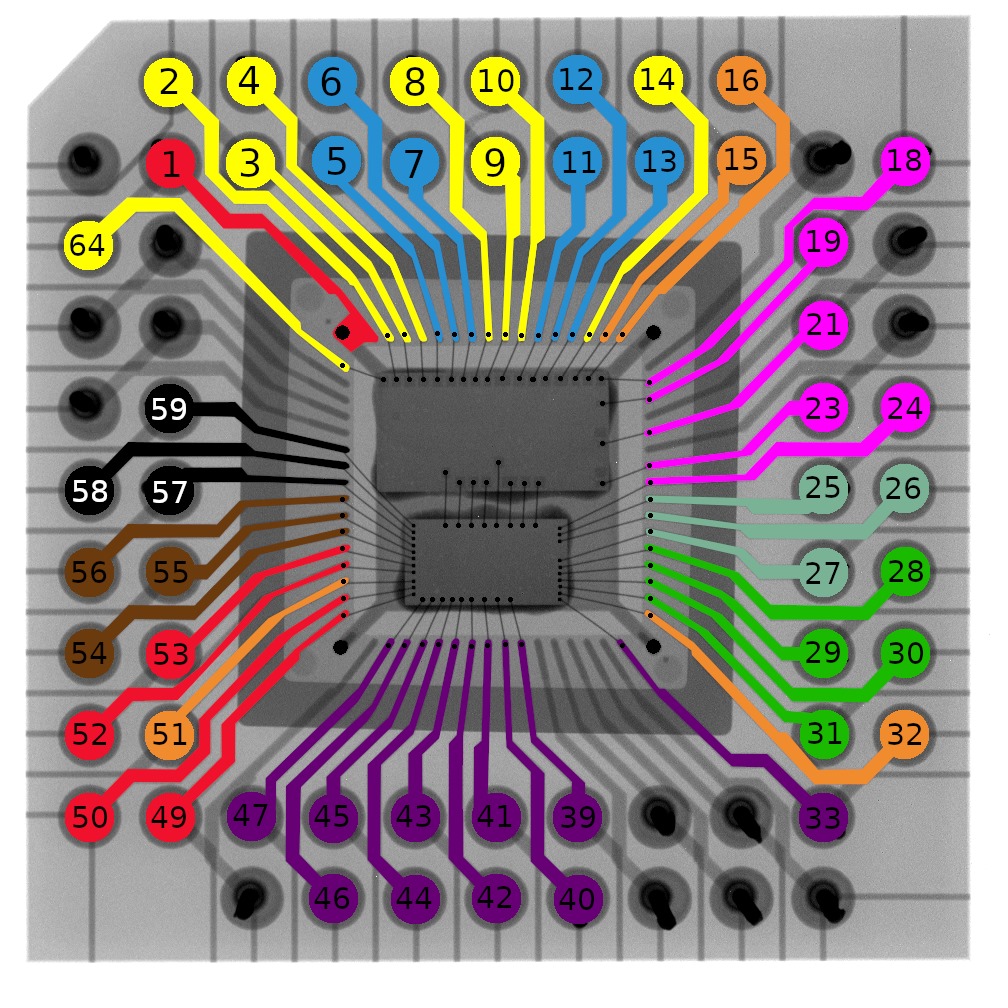
Larger chip is resistive networks die and smaller chip is logic active die. Connections between dies and to external pins done with gold wire bonds and whole hybrid assembly is protected mechanically by the ceramic cap. Cap is glued to the package on the bottom side with some hard epoxy. This provides sound mechanical design but is not exactly hermetical over the very long-term duration. Thanks to amazing microscope and support from The Signal Path we can enjoy high-resolution die close-up photograph with all silicon structures and routing clearly visible.
Originally U180 chips were manufactured by HP fab in USA, but after transition of instrumentation business to Agilent fabrication of the chip and other components was outsourced to overseas fabs, like these days in Malaysia for RoHS version of 3458A. Old HP Journal from 1989 dedicated to 3458A design features give us also some performance targets that resistor network had to meet to enable 3458A’s ADC performance:

Physically resistor network chip is a mix of thin-film resistive networks of various values. All of these values are clearly outlined in old 1989 Component Level Repair Manual from Hewlett-Packard for 3458A. There are total 7 isolated networks.
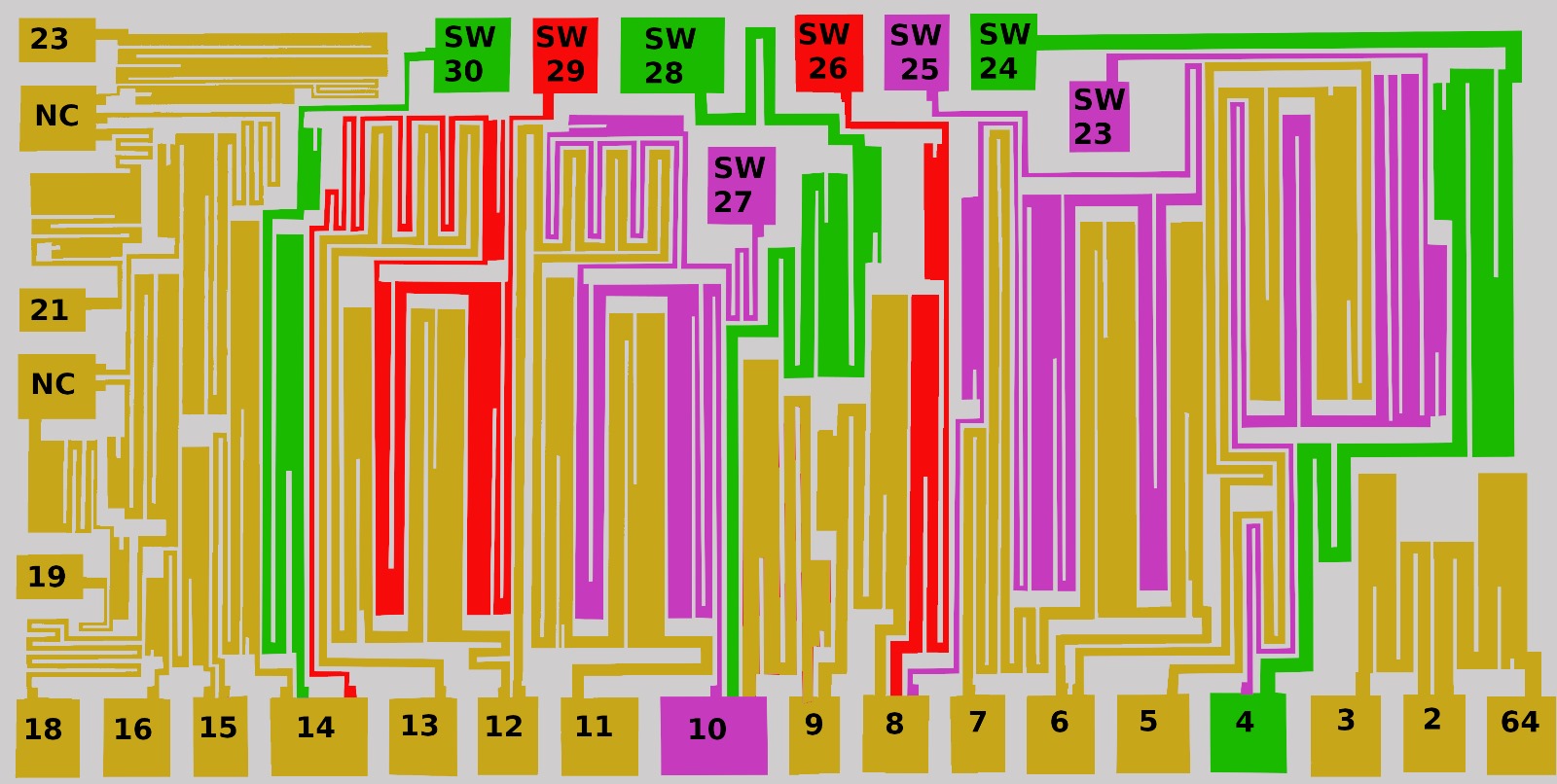
Image 1: X18 A3 ADC stability of HP 3458A S/N 2823A20931, Option 001, 002. CSV available on click
Overall this ADC is more complex evolution of multi-slope design from the predecessor HP3457A DMM . Enclosing critical circuits into dedicated hybrid help to mitigate thermal gradients and limit parasitic effects with better control. Somewhat similar designs take roots from older instruments like 3456A, 3457A. Richi’s Lab took beautiful micrographs of ASICs used in the old HP 44701A 5½-digit system DMM module of that era. With his permission these images are reproduced below. Click to zoom in for glorious details.
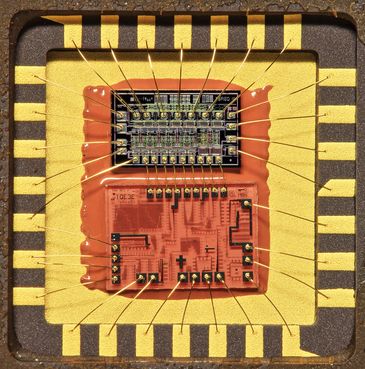
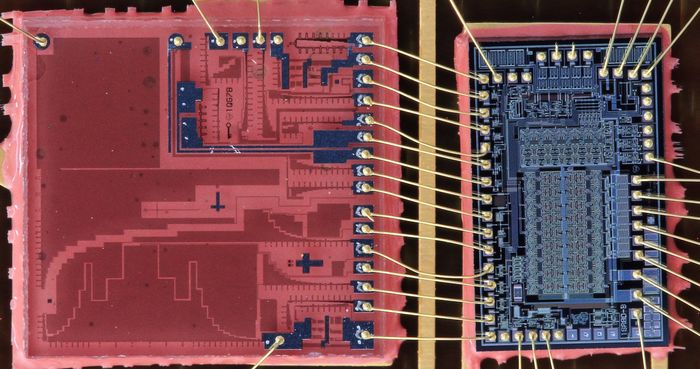
Image 1: Hybrid ASICs developed and used by Hewlett-Packard for older DMMs
Just like 3458A’s U180 these ASICs have also contain two separate dies mounted on single sealed carrier. More photos of HP 44701A chips from 1982 and great details shown on Richi’s site here. Popular 34401A 6½-digit DMM also have two special hybrids, one with resistive network enclosed in purple ceramic and second plastic ASIC with all analog circuitry and switches for multislope ADC.
Based on this information we can conclude that there is no easy repair possible when either resistor network die or logic die goes bad inside of this bespoke U180 hybrid ASIC.
How to quickly can I check if my HP3458A is good and stable or need new A3 replacement?
Sadly there is no good answer to this question, unless the instrument is drifting very badly which would be obvious even after few hours of the runtime after warm-up period of 8 hours. At the very minimum evaluation of the drift during 7 days is required, but to have decent confidence in the data I would recommend watching the drift during 30 days or more. I often joke to new 3458A owners that once you start worrying about 3458A drift – you never stop. Also there were cases when initially “drifty” A3 unit slowly stabilized after running for 6 months. Also instrument must be continuously powered up to avoid lengthy multiple hours warm-up instability biasing the drift data, as ACAL ALL procedure is also correcting temperature-related changes in addition to the purely electrical drift. You do not need to use any external equipment or 10 V standards to evaluate own 3458A drift against it’s internal A9 LTZ1000A reference voltage source.
At xDevs.com lab I’m collecting constants data and running ACAL ALL procedure every week when instruments are not in use, and our main 3458A’s are being powered up non-stop 24/7 for years, just to avoid turn-on/turn-off thermal cycling and stress. Lot of low-power signal electronics experience the most stress when it is being powered on/off. This is explained in details later in this guide.
ACAL procedure available in 3458A claimed to correct any of the drift, so why does it matter if ADC has some small daily drift?
ACAL is indeed able to correct the gain drift originated from sub-par A3 board. However ACAL process designed and relies on excellent linearity of the 3458A ADC to perform all the internal transfers with low uncertainty during the ACAL. In many cases drift is developed due to instability of internal U180 resistor network and that also often degrades linearity beyond expected ±0.1 µV/V specifications that good 3458A is demonstrating. Running ACAL every time you need corrected measurement is also inconvenient for operator especially if measurements are not automated by the computer script or program. ACAL is also adds lengthy dead time in the measurements since 140 seconds are needed to perform ACAL DCV procedure for DC voltage ranges or whole 860 seconds for ACAL ALL if AC voltage measurement is required.
If bad A3 also has degraded linearity of the affected 3458A, is it possible to measure INL and determine bad A3 this way?
A: Yes, it is possible if the source of the drift related to U180 resistor network, which is often but not always the case. Here are few of the INL measurement results that show bad performance of drifty A3 PCBA installed in meter under label “3458D”.
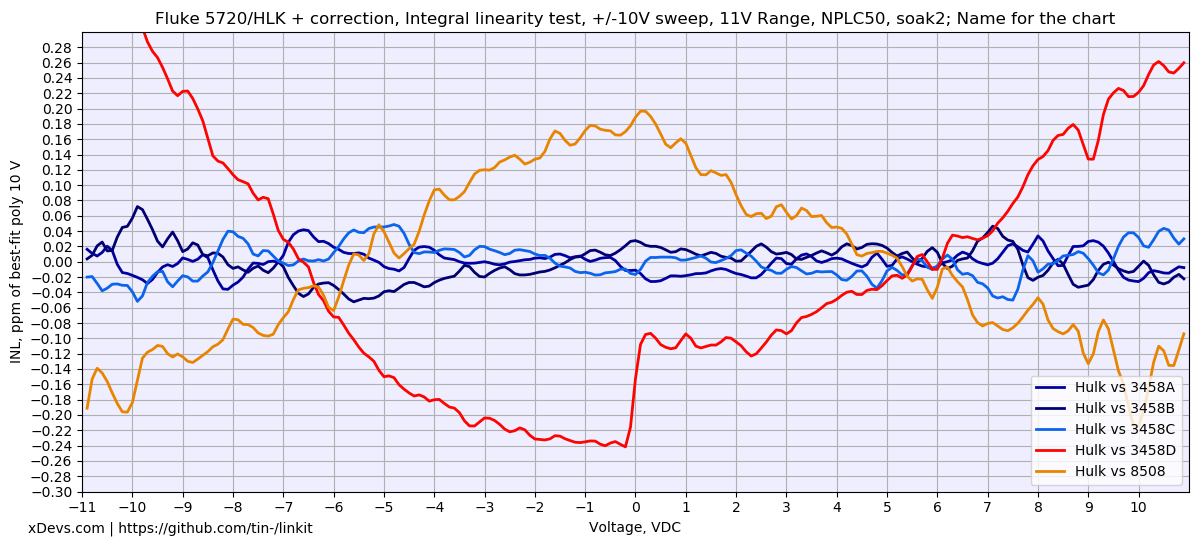
Image 1: Bad INL observed in the drifting A3 ADC installed in 3458D unit
Bad 3458A was having a significant error around zero volt middle point as well as clearly visible non-linearity across the sweep from -11 to +11 V, compared to good and healthy tandem of three 3458A DMMs. INL sweep was completed over the duration of few hours with ACAL DCV executed just before the first point measurement. This time duration was already enough to negatively affect very tight INL specification of 3458A. Repeating similar test over longer duration and another bad A3 also shows large 0.3 µV/V error around zero point for bad 3458D labelled DMM.
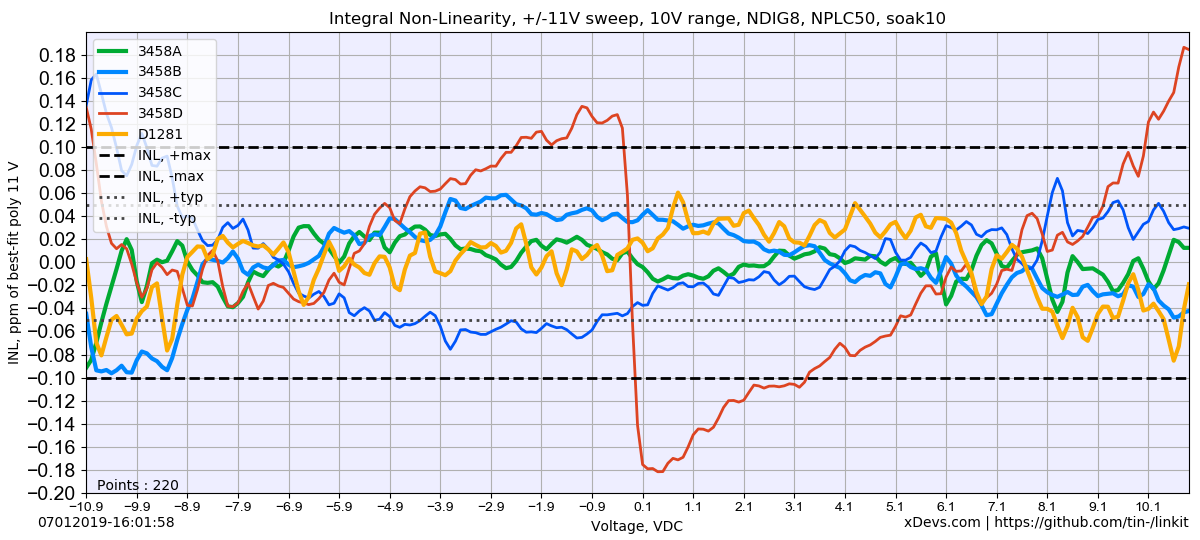
Image 1: Bad INL observed in the different drifting A3 ADC installed in 3458D unit
If operator perform a typical DC voltage transfer with such bad DMM to obtain a calibration 1 V relative to 10 V additional error of the measurement due to INL and drift would be +0.3 µV/V. More details, INL measurement methodology and charts are available in this dedicated article
If I got A3 that is only have small drift, can’t I just keep it as is and apply corrections in software/processing later?
A: It is possible but you’ll need to characterize and verify that drift is still same in magnitude and behaves very much as a linear trend. Number of cases with bad A3 was reported when initially small by tolerable drift accelerated over time and ended up with hard faults and error reporting “Error 114: multislope convergence error” or “Error 114: balanced convergence error” with instrument not being able to perform acquisitions at all.
I’ve determined that my A3 is bad and want to fix it, what can be done now?
A: Since U180 hybrid IC is no longer separately available from manufacturer the only two options available are the expensive ones – contact Keysight service department to purchase a replacement A3 assembly or send the 3458A as a whole to Keysight service for per-incident repair. Availability of A3 boards is scarce and depends on specific terms of purchase, but typical price for them is around 2000 USD, while per-incident repair of the whole instrument and included re-calibration of the instrument is about 3700 USD.
I have old HP-branded or Agilent-branded or white Keysight 3458A instrument, can I still use latest and greatest RoHS A3 PCBA in my unit?
A: Yes! With RoHS redesign Keysight and it’s manufacturing partners made all assemblies electrically and physically compatible. It is possible to operate the very old 1989 A3 ADC in brand-new RoHS Keysight instrument, as well as run newest year 2023 A3 in the old 1989 HP DMM chassis with latest Rev.9 firmware.
Older firmware such as Rev.8 and below are not compatible with new RoHS LF A3 boards. Instrument would mostly work but will fail self-test diagnostics right at the beginning with SLAVE CONVERGENCE ERROR.
Improved xDevs X18 drift stability performance test and guidelines
Based on all this information above and inspired by original Service Note 18 ideas I’ve tested and implemented own improved test procedure X18 to better judge the performance of 3458A and provide additional criteria to separate just normal performing DMMs from lemons and golden high-stability ones.
This procedure is not related to what Keysight product warranty would cover and should not be used as a sole reason for repairs. It is provided as educational resource to facilitate better understanding of 3458A operation and possible achievable performance.
Writing down number of long-resolution values with a pen from the instrument’s front panel is not the way I want to spend my limited free time, so I’ve summoned Python programming language and GPIB interface to automate this boring data collection task into text DSV-file with ACAL procedure runtime timestamp, TEMP? value and key constants. It is also possible to collect all of the calibration constants from the 3458A over GPIB bus but instead I’ve focused on few key parameters this time:
- CAL? 1,1 – provides internal 40 kΩ VHP101 artifact resistance standard value, based on external adjustment procedure.
- CAL? 2,1 – provides internal A9 LTZ1000 7.1 V artifact voltage standard value, based on external adjustment procedure.
- CAL? 59 – artifact calibration constant for TEMP? readout value during external 10 V adjustment
- CAL? 70 – artifact calibration constant for DC voltage 0.1 V range gain
- CAL? 71 – artifact calibration constant for DC voltage 1 V range gain
- CAL? 72 – artifact calibration constant for DC voltage 10 V range gain
- CAL? 78 – artifact calibration constant for resistance 10 kΩ range gain
- CAL? 86 – artifact calibration constant for resistance 1 kΩ range gain with OCOMP
- CAL? 87 – artifact calibration constant for resistance 10 kΩ range gain with OCOMP
- CAL? 79 – artifact calibration constant for resistance 100 kΩ range gain
- CAL? 97 – artifact calibration constant for DC current 1 mA range gain
- CAL? 176 – artifact calibration constant for last temperature value during ACAL Ohm
Constants can be checked from front panel as well. Full list of constants used in 3458A is listed on the pages 91 to 102 in the 3458A Multimeter Calibration Manual, Edition 7 or newer RoHS revised variant. These constants can be used to perform quite a lot of analysis on stability of various common DMM ranges in addition to just checking stability of A3/A1 10 V most important ADC signal path.
Logging A9 and 40 kΩ values is useful to establish drift of this internal standards relative to external calibrations and provide an estimate of long-term stability relative to used external standards. Storing CAL? 59 is also handy to know what was the TEMP? value during such external adjustment so possible significant temperature coefficient of the ADC/A1 could be accounted for. Collecting DC voltage gain values for amplified 1 V and 0.1 V ranges can be used to determine stability of the A1 front-end amplifier and related circuits as well as temperature coefficient of these blocks. Same idea applies for four resistance ranges from 1 kΩ to 100 kΩ and DC current 1 mA range.
If you got multiple 3458A in the lab it is possible to run the same script in parallel across all of them with simple code modification to talk with meters, such as example for 3 meters provided below.
These scripts are currently configured to run with Agilent/Keysight E5810A LAN-GPIB gateway on IP 192.168.50.14 but it is not difficult to modify them to utilize another GPIB interface library, such as linux-gpib or NI VISA. Number of guides were already covering this topic at xDevs:
- Using Agilent/Keysight E5810A with python
- Setting up and using Agilent 82357B GPIB USB pod in RPi Linux
- Using pyvisa to interface instruments via NI VISA
- Setting up and using NI USB-GPIB-HS in Raspberry Pi Linux
- Using ALTERA/Terasic DE1-SoC (Cyclone V SE FPGA SoC) kit for linux-gpib
- HP 3458A GPIB remote control guide article
With settings in the script files ACAL ALL command is sent to 3458A every hour and constants are collected afterwards into DSV-file, one line per hour. There is some additional markdown syntax in the line so the file is not following strict CSV format, but it is easy to extract needed data for later post-processing. Example line shown below:
| Date/time | TEMP? | CAL? 1,1 40kΩ | 2,1 LTZ | 78 R10kG | 79 R100kG | 71 DCV 1G | 70 DCV 100mV G | 86 R1k GO | 87 R10kGO | 176 ACAL T | 59 CAL 10V T | 97 DCI1mAG | CAL? 72 |
|---|---|---|---|---|---|---|---|---|---|---|---|---|---|
| 12/01/2020-07:48:31 | 39.6 | 39999.2479 | 7.07034404 | 1.00024562 | 0.999875281 | 0.982396017 | 0.979582634 | 1.00000410 | 1.00024523 | 39.56 | 37.488 | 0.979079210 | 0.982331213 |
| 12/01/2020-17:40:34 | 39.9 | 39999.2479 | 7.07034404 | 1.00024724 | 0.999876717 | 0.982396092 | 0.979582899 | 1.00000455 | 1.00024684 | 39.92 | 37.488 | 0.979079125 | 0.982331153 |
| 14/01/2020-01:46:33 | 37.0 | 39999.2479 | 7.07034404 | 1.00024294 | 0.999873368 | 0.982395332 | 0.979581538 | 1.00000223 | 1.00024260 | 37.03 | 37.488 | 0.979084107 | 0.982331306 |
| 15/01/2020-00:38:58 | 38.6 | 39999.2479 | 7.07034404 | 1.00024445 | 0.999874678 | 0.982395421 | 0.979581937 | 1.00000271 | 1.00024405 | 38.56 | 37.488 | 0.979083070 | 0.982331312 |
| 16/01/2020-01:47:11 | 38.5 | 39999.2479 | 7.07034404 | 1.00024458 | 0.999874582 | 0.982395558 | 0.979582147 | 1.00000299 | 1.00024418 | 38.52 | 37.488 | 0.979082237 | 0.982331280 |
| 16/01/2020-23:58:39 | 34.9 | 39999.2479 | 7.07034404 | 1.00023903 | 0.999869984 | 0.982395200 | 0.979581391 | 1.00000065 | 1.00023872 | 34.86 | 37.488 | 0.979087783 | 0.982331519 |
| 17/01/2020-22:53:49 | 35.4 | 39999.2479 | 7.07034404 | 1.00023881 | 0.999869893 | 0.982394910 | 0.979581377 | 1.00000041 | 1.00023850 | 35.37 | 37.488 | 0.979088419 | 0.982331471 |
| 18/01/2020-15:51:28 | 35.6 | 39999.2479 | 7.07034404 | 1.00023776 | 0.999869214 | 0.982394586 | 0.979580753 | 0.999999605 | 1.00023744 | 35.61 | 37.488 | 0.979088884 | 0.982331405 |
| 18/01/2020-20:09:19 | 35.9 | 39999.2479 | 7.07034404 | 1.00023838 | 0.999869517 | 0.982394906 | 0.979581396 | 1.000000020 | 1.00023807 | 35.89 | 37.488 | 0.979087803 | 0.982331546 |
| 19/01/2020-01:29:32 | 35.9 | 39999.2479 | 7.07034404 | 1.00023811 | 0.999869305 | 0.982394871 | 0.979581501 | 0.999999733 | 1.00023779 | 35.91 | 37.488 | 0.979087791 | 0.982331524 |
| 21/01/2020-03:29:21 | 35.5 | 39999.2479 | 7.07034404 | 1.00023710 | 0.999868230 | 0.982395115 | 0.979581504 | 0.999999251 | 1.00023681 | 35.52 | 37.488 | 0.979088919 | 0.982331645 |
Automatic ACAL ALL takes 860 seconds to complete after which instruments are left in idle state. It is also possible to configure such stability datalogging script to run once every 12 hours, for example to perform logging of values and ACAL in the evening while leaving meter free for lab use during the day. Example of the resulting files collected over a duration of 1570 days are available below for download and review:
Data-file with key constants, ACAL temperature and date/time generated by script for 2823A13345
Data-file with key constants, ACAL temperature and date/time generated by script for MY45040325
It is also possible to integrate some fancy graphical interface, analysis and plotting of DMM stability in Python script but for now I’ve done analysis and graphs manually in Excel. Perhaps someone more programmatically-inclined can improve upon this approach to make nice user-friendly 3458A Stability tester?
Determine 10V gain temperature stability and temperature correction method for CAL? 72 data
Once we have the datafile with meter’s internal temperature and CAL? 72 constant value it is not difficult to analyze the correlation between temperature and 10 V gain, mostly derived from A3+A9 performance. We tested many of the A9 PCBA with LTZ1000A modules for temperature coefficient outside of the 3458A and many of these modules have excellent temperature stability with temperature coefficient better than ±0.1 µV/V/K. This means possibility to consider A9 LTZ1000A value as stable over temperature and calculate if there is large temperature coefficient contribution by A3 ADC itself. If enough of the data collected then this method can be used to estimate temperature stability even for the excellent performers.
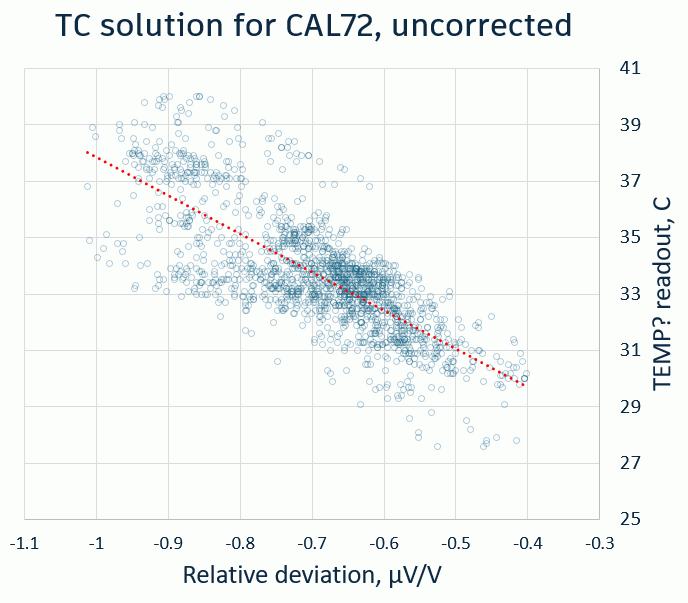
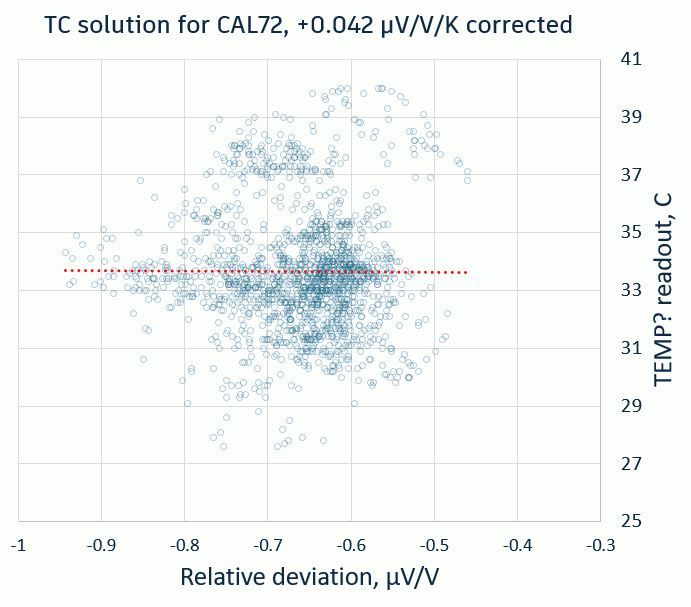
Image 1: Temperature coefficient of our HP3458A (left) and corrected data from same meter (right)
Two charts show identical dataset collected from my MY45040325 DMM but with +0.042 µV/V/°C linear correction applied for the chart on the right. Based on my experience with many older HP and Agilent 3458As typical temperature coefficient of 10 V range on these instruments is in range around ±0.1 µV/V/°C to ±0.3 µV/V/°C. Limited (a bit over 6 units) testing of early RoHS instruments and standalone RoHS A3 boards (03458-66533 P/N) made in years 2019 to 2021 show noticeably larger tempco around ±0.4 µV/V/°C to ±0.55 µV/V/°C. Uncorrected temperature correlation chart from Keysight RoHS 3458A demo unit done during 2020 review is presented below to support this statement:
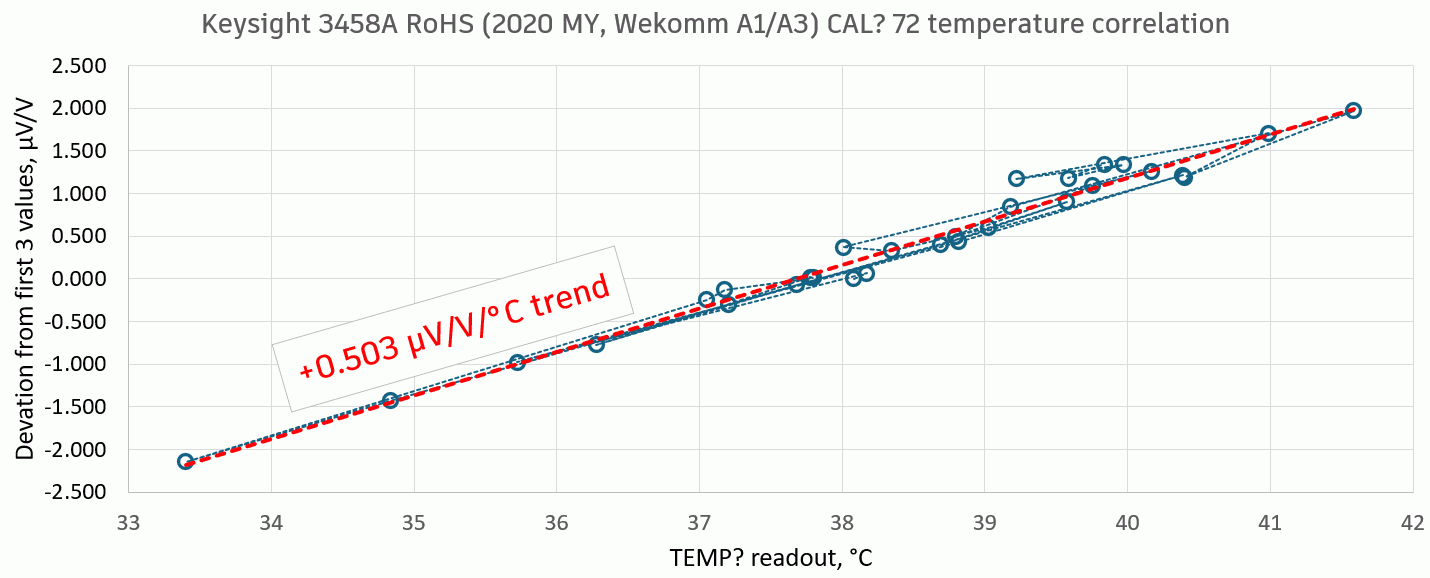
Image 1: Temperature coefficient of the early RoHS Keysight 3458A DMM, based on CAL? 72 data
Application of this temperature correction in combination to verified low temperature coefficient of A9 LTZ1000A module allows us to better establish the gain stability of the A3 U180 chip and related circuits without worrying about day to day or hour to hour temperature variations. I also consider looking at the total drift trend starting from the very first 2-5 days data points, instead of the day-to-day variations like the HP Service Note 18A suggests.
Stability test X18 method results, charts and conclusions with specific instruments
Equipped with these methods and datasets we can now easily plot the long-term drift performance of 3458A under test. Below are charts collected in-house for both of our internal 3458A meters, analyzed across the span of 1565 and 1570 days since January 2020 until end of April 2024. Later sections present data provided by our friends and readers to make this guide more useful for future 3458A owners.
HP3458A S/N 2823A13345 – modified A9 for lower +65 °C LTZ1000A oven, A3 replaced twice in 2015, runs non-stop since
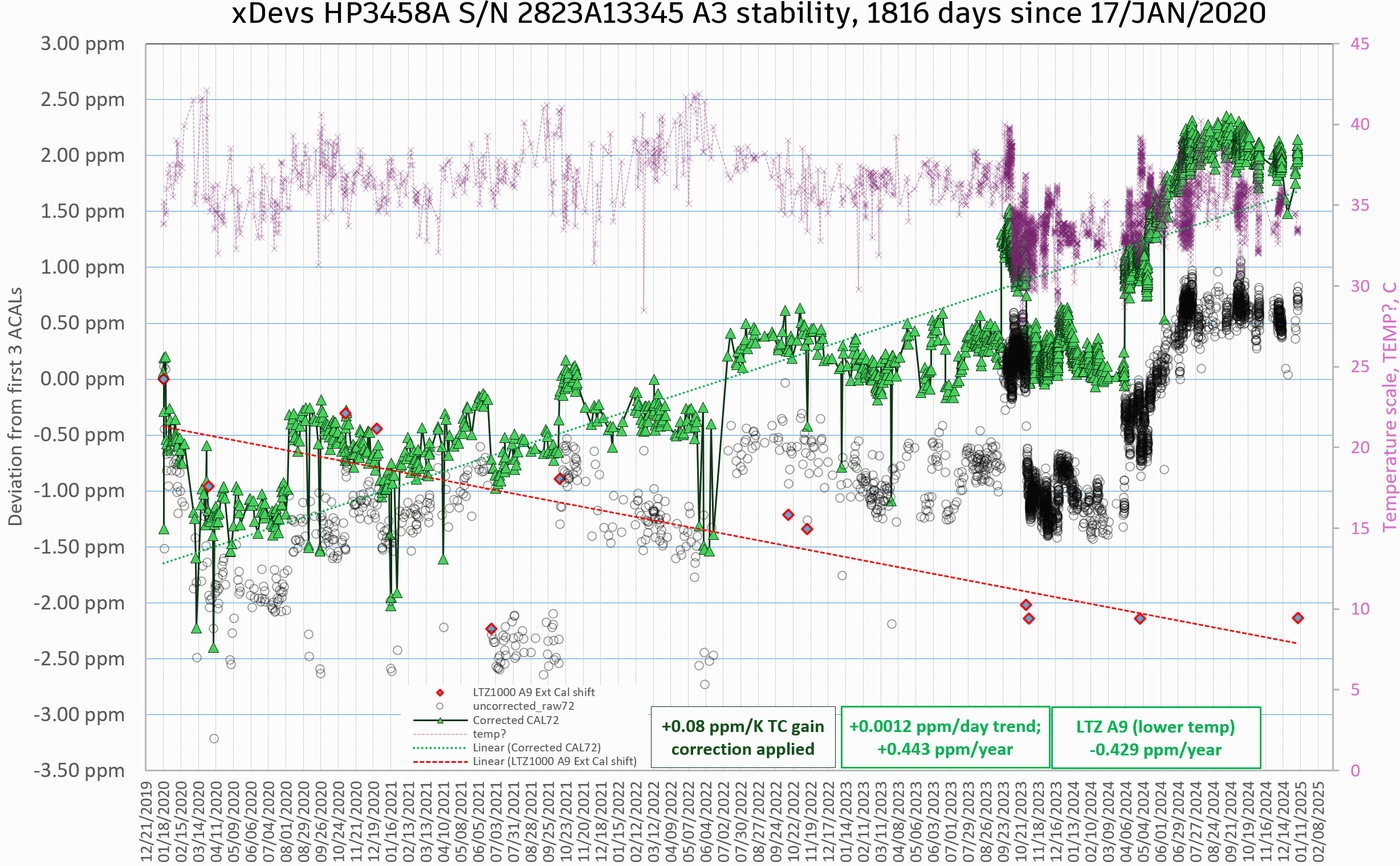
Image 1: X18 stability test result graph for HP3458A S/N 2823A13345 during last 5 years
Based on this analysis we can determine excellent stability of this old instrument obtained after repairs and continuous non-stop operation since January 2016. It took three A3 ADC replacements to find a good one but now meter is very happy and continue to help with DC voltage metrology projects and LTZ1000/ADR1000/ADR1001 reference build in the lab. Stability achieved on CAL? 72 despite few jumps due to external adjustments is better than +0.002 µV/V/day which is excellent figure and allows to use instrument without ACAL for many days and weeks non-stop. Temperature for LTZ1000A oven is reduced per simple A9 modification showcased by Dr. Frank in 2015.
HP3458A S/N MY45040325 – modified A9 for lower +65 °C LTZ1000A oven, low noise unit, A3 replaced in 2016, runs non-stop since
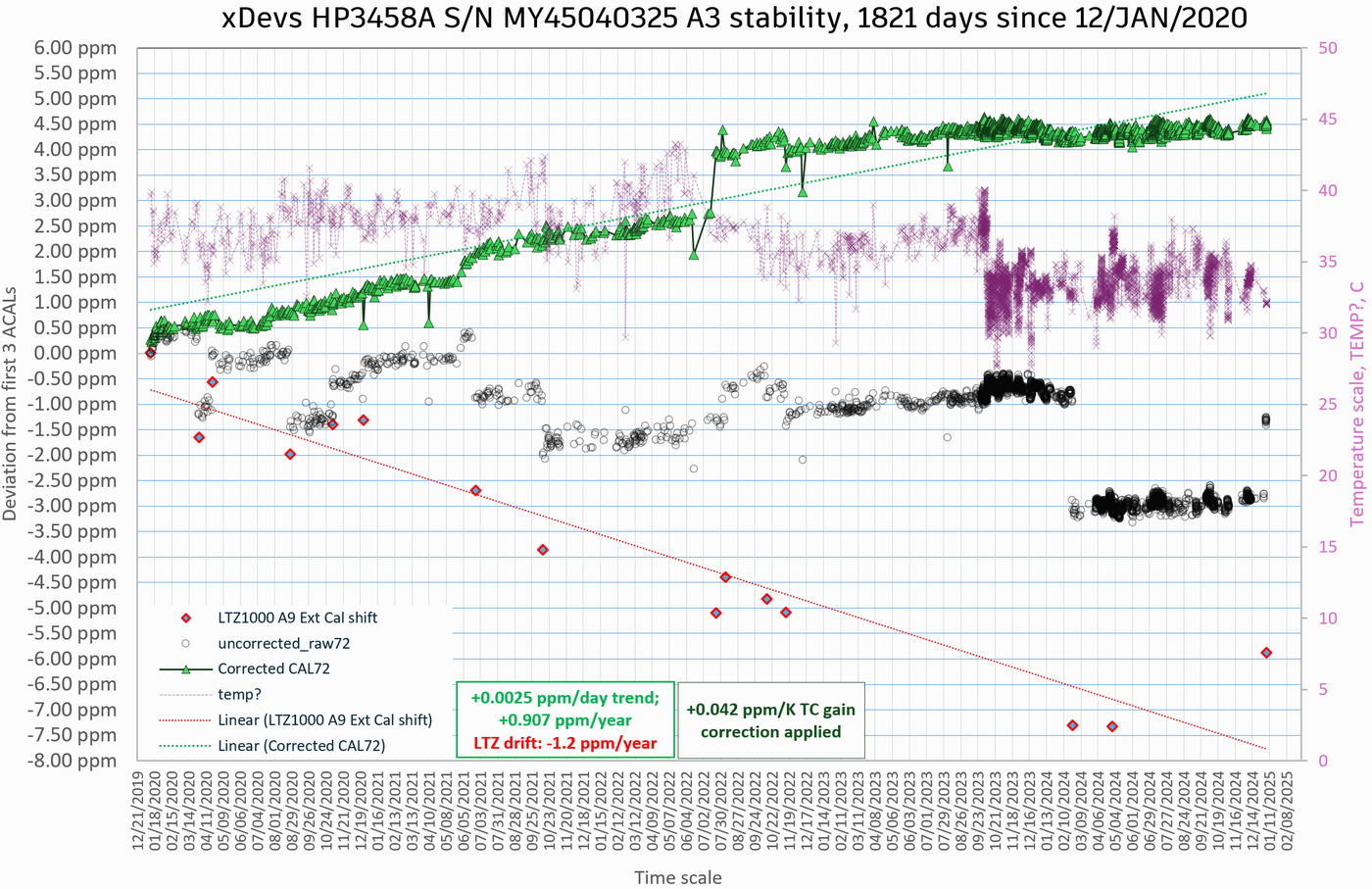
Image 1: X18 stability test result graph for HP3458A S/N MY45040325 during last 4 years
Second instrument with same analysis methods also show excellent stability after original repairs done in early 2017. This meter is also in continuous non-stop operation since beginning of 2017. It has newer 2016 year A3 ADC with ALTERA MAX V CPLD patch board. Stability achieved on CAL? 72 despite few jumps due to external adjustments is better than +0.003 µV/V/day which is also excellent figure and allows to use instrument without ACAL for many days and weeks non-stop. Temperature coefficient below ±0.05 µV/V/°C also allows me not to worry much about temperature deviations in the lab when performing demanding DC voltage measurements.
Additionally on this chart I’ve plotted changes of A9 LTZ1000A voltage after each external calibration adjustment. LTZ1000A in this meter is also running at reduced +65 °C temperature and demonstrated long-term drift around -1.7 µV/V/year which is better than HFL specification for special references selected by Agilent for Fluke.
Excel data-file with all values and math used to generate plots above
Keysight 3458A S/N MY4505XXXX – factory original white panel instrument, 2016 model year
Another dataset from the newer Keysight 3458A manufactured in summer of 2016 demonstrate similar performance across 894 days since end of 2021 year. This meter comes with slightly worse temperature coefficient around +0.17 µV/V/°C. ADC stability is better than +0.004 µV/V/day which is again excellent result.
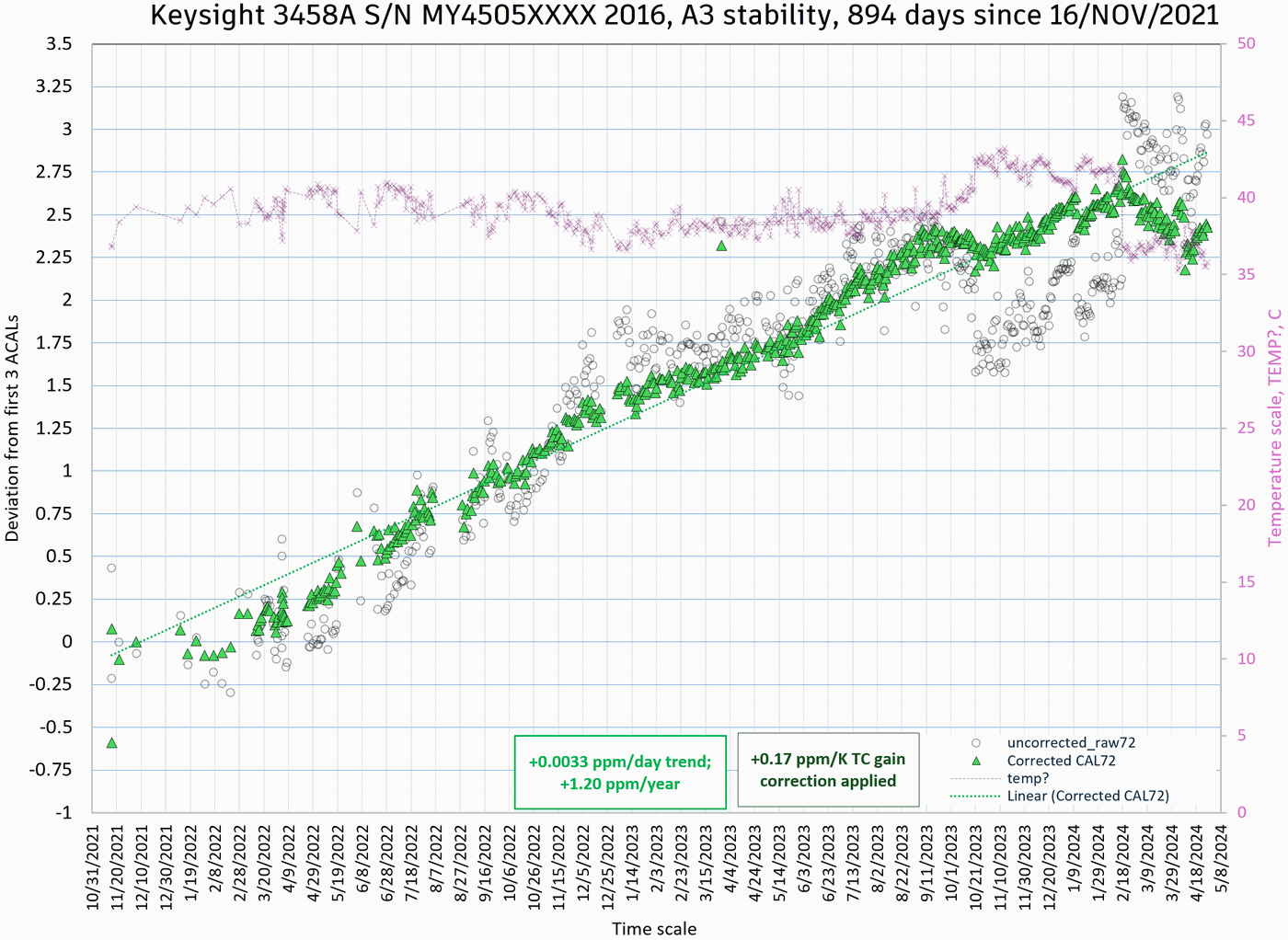
Image 1: X18 stability test result graph for HP3458A S/N MY4505XXXX during last 2.5 years
Interesting to see apparent change of the drift since February 2024 but it could be just laboratory layout change-related effect as it is possible to see reduced internal temperature in the meter. Or perhaps the owner finally cleaned the fan filter :) There is some unavoidable uncertainty when one try to split nV/V values across long-term data set. Still, based on these and many more X18-type data studies for other old HP3458As that I’ve helped to repair for friends and our labs at xDevs.com we have set acceptance limits for 3458A performance in X18 test as outlined in table below.
HP3458A S/N 2823A20931
This unit is from 90’s with older HP branded hardware. It was sitting idle for number of years and only recently started running X18 test procedure from January 19, 2024.
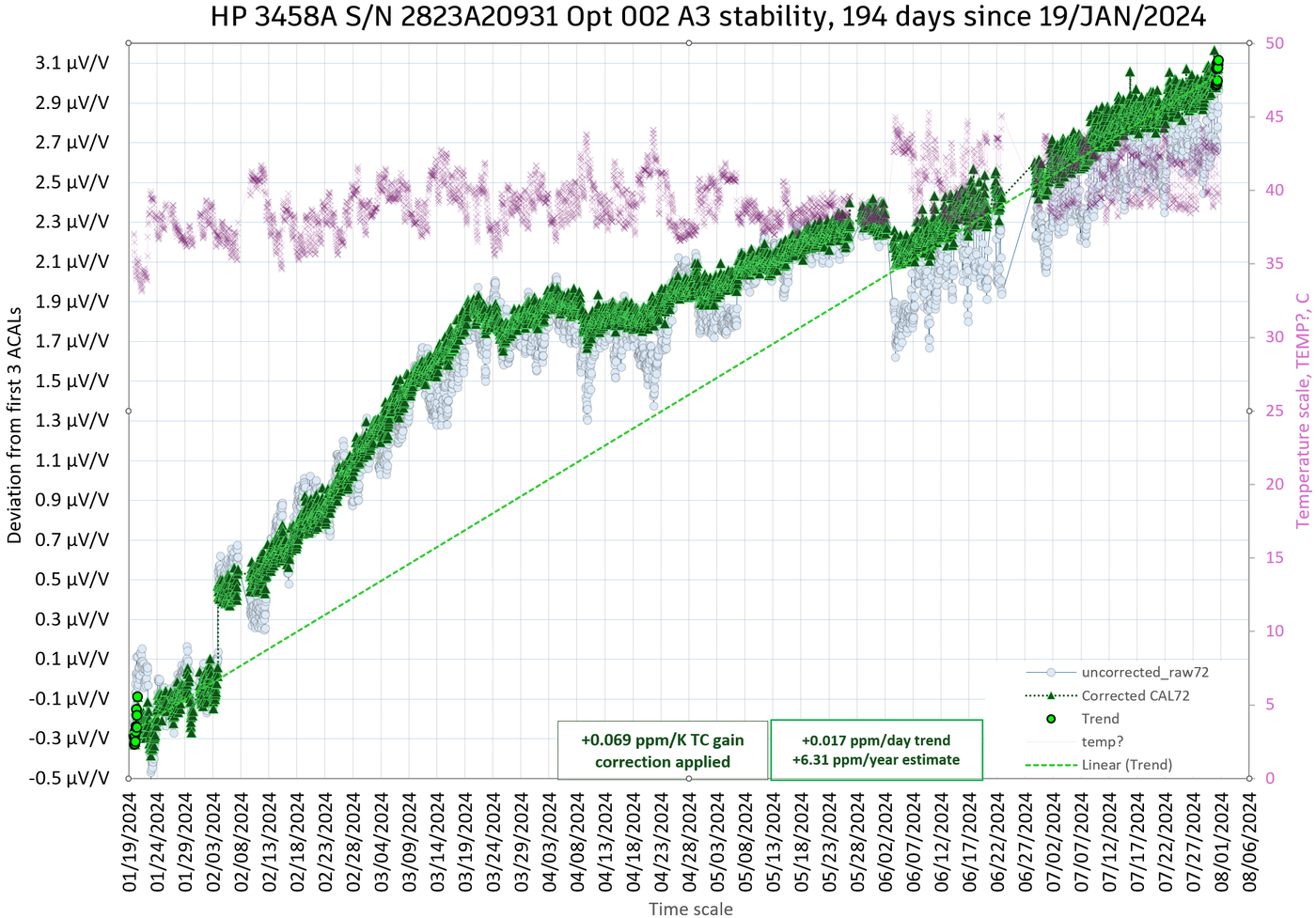
Image 1: X18 A3 ADC stability of HP 3458A S/N 2823A20931, Option 001, 002. CSV available on click
DSV-data file with points for this DMM
Based on these samples temperature correction was established at +0.07 µV/V/K. Meter drifted with a linear rate estimate +0.021 µV/V/day over this period with a sudden +0.6 µV/V jump after 331th ACAL ALL procedure. After running non-stop for over 1200 hours meter now demonstrating even better performance. This is again outlines benefit of keeping HP/Agilent 3458A’s running powered non-stop, even when not used for any measurements.
There were few brief (less than 30 minutes) power interruptions due to utilities work and moving instruments on the bench but the impacts of these activities isn’t visible on data except perhaps that single shift?
HP3458A S/N 2823A17282
Next multimeter has also HP Gen2 beige enclosure and hardware. It was logging together with previous unit in the same room.
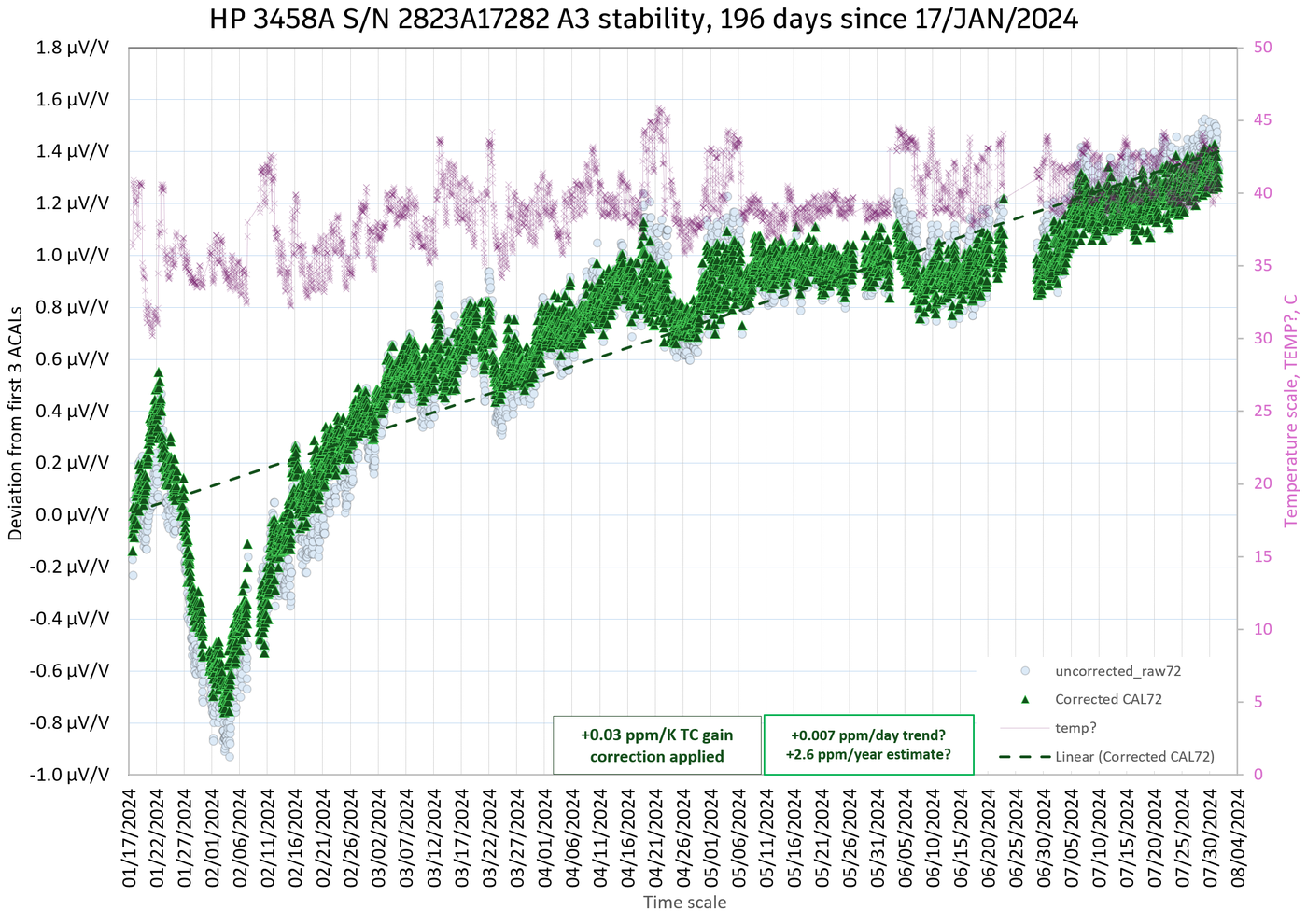
Image 1: X18 A3 ADC stability of HP 3458A S/N 2823A17282, Option 001. CSV available on click
DSV-data file with points for this DMM
Based on these samples temperature correction was established at amazing +0.03 µV/V/K. First 60 hours meter drifted up then suddenly changed drift direction down and after about 250 hours returned to upward drift with decreasing speed. Final linear trend estimate gives us +0.011 µV/V/day over whole powered up period. This is yet another confirmation of the benefits of keeping HP/Agilent 3458A’s running powered non-stop.
Agilent 3458A S/N 2823A21408
This instrument is a later one with whiter color Agilent enclosure and later generation hardware. It was logging together with two previous instruments. Based on the data it is also the worse one out of the three.
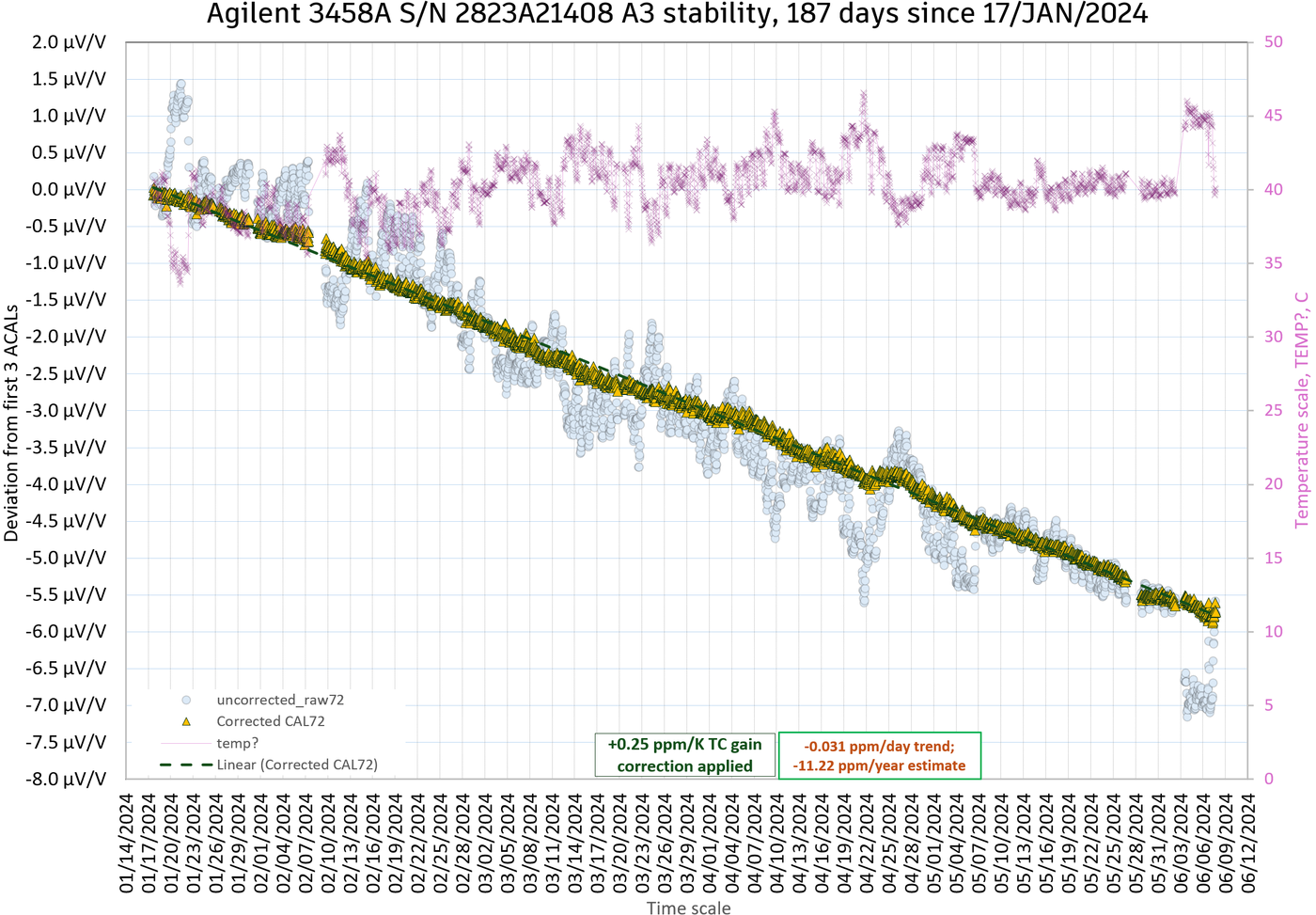
Image 1: X18 A3 ADC stability of Agilent 3458A S/N 2823A21408, Option 001. CSV available on click
DSV-data file with points for this DMM
Temperature correction was established at noticeable -0.25 µV/V/K which is half of the HP 10 V DC range specification without ACAL use. Meter drifted with a steady linear rate estimated -0.042 µV/V/day over the whole period. Unlike other two HP meters in this tandem of three, Agilent DMM does not show any jumps or drift rate changes.
Data collection continued even later, and after 357 days we get yet another chart.
DMM was recalibrated and adjusted in between and stayed in cold power off state for few weeks. These events caused some irregularity in the drift data, but overall it returned to very close to previous slope about -0.037 µV/V/day, slowly drifting downward. Keep in mind that this is still very good DMM that meets all manufacturer specifications and no repairs are needed for these instruments. There will never be perfect zero drift instrument, especially with such long-term periods at months/years scale. It is simply another yet confirmation of the fact that every instruments drifts and has inherent aging instabilities, even such expensive and good one 8½-digit model. Only real question is how this instability behaves over time of interest and if it can be predicted reliably enough to produce good confidence in the actual measurement results.
HP3458A S/N 2823A037XX – Option 002 unit from 1989
Forum member MiDi shared his detailed story with used 3458A repairs and collected 1445 days of the stability data as well. He used own Python script which is available here. MiDi opted to collect nearly all calibration constants which can be very useful for more detailed analysis of 3458A performance over the long period of time. Meter was never adjusted since repairs.
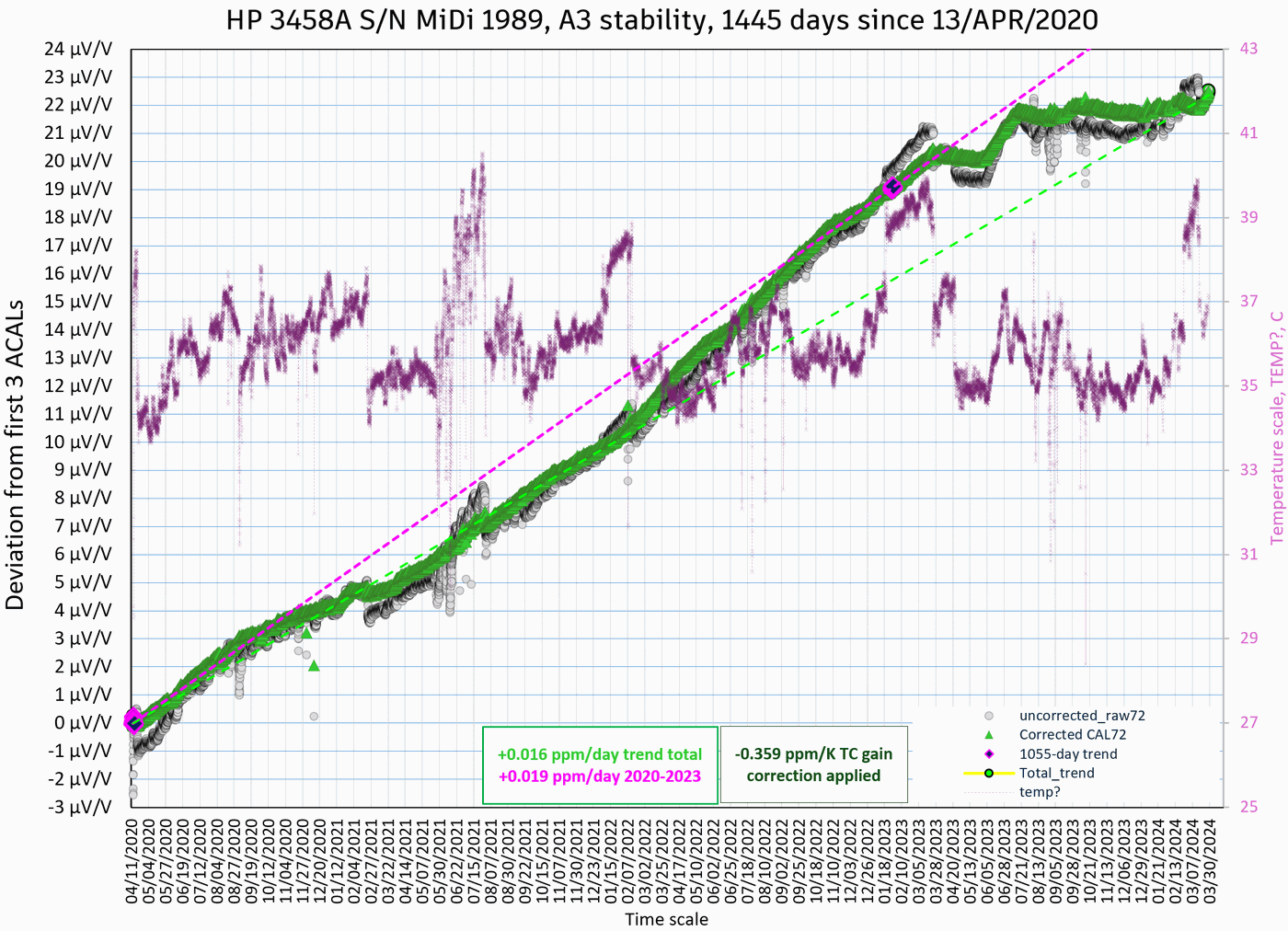
Image 1: X18 stability graph with 1445 days of MiDi’s 3458A CAL?72 data
Based on this dataset we can make a nice plot with full timescale span after applying quite noticeable temperature correction at -0.359 µV/V/K. Meter has mostly linear drift with two visible linear slopes at about +0.019 µV/V/day for first three years.
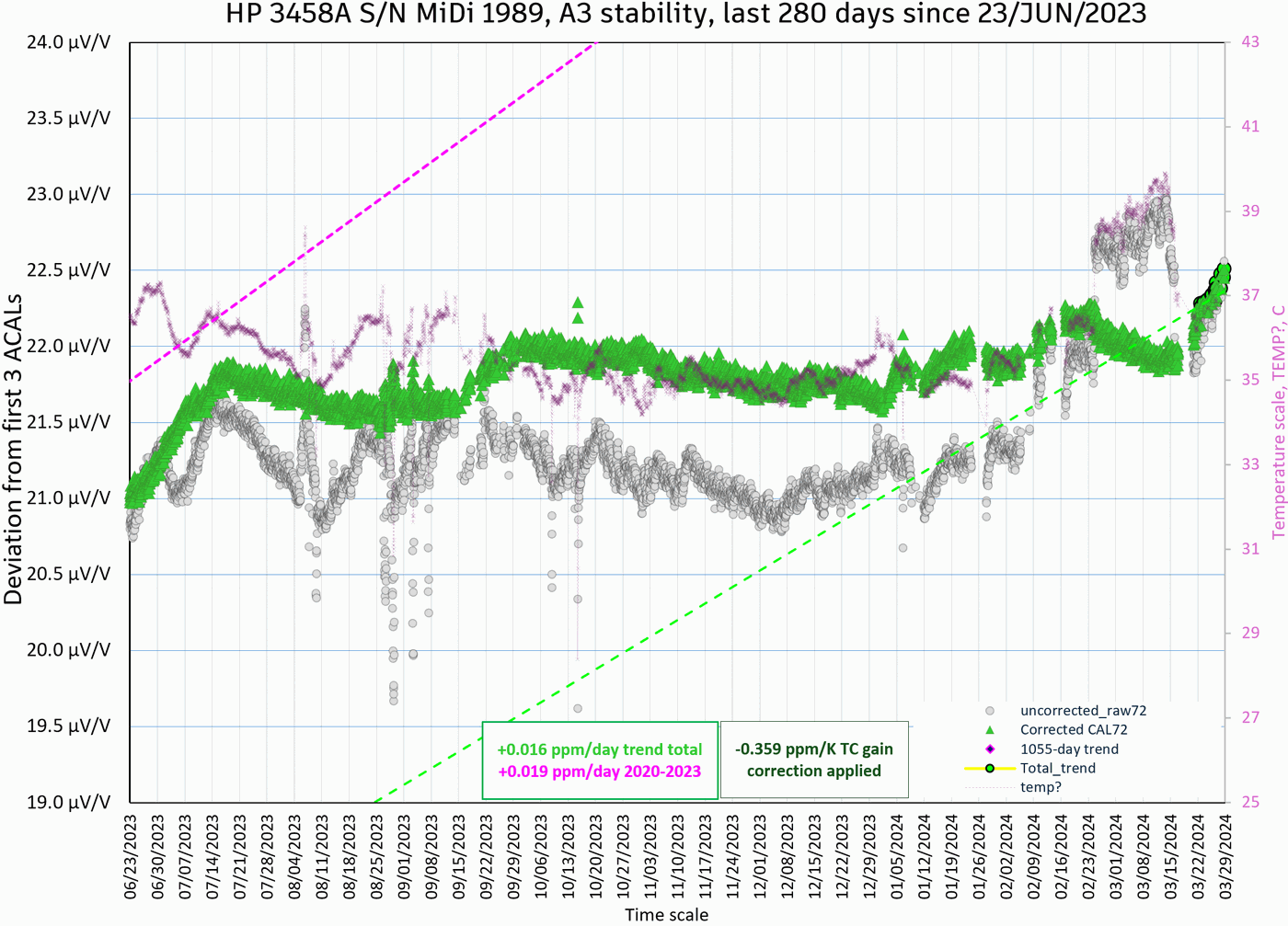
Image 1: X18 stability test result graph for MiDi’s 3458A during last 280 days
Since mid-July 2023 until end of April 2024 meter able to demonstrate even smaller mostly linear drift at excellent +0.005 µV/V/day (calculated as +1.5 µV/V change over 280 days span).
All these DMMs above have good healthy boards and demonstrate very good performance. But how would something drifty would look like with same processing and math applied to the dataset? Here’s a dataset from a community member obtained from HP DMM made in 1990 and with original A3 board. Welcome the DMM with data below:
HP3458A S/N 2823A04310 – factory original Gen 2 unit from 1990 year, bad A3 board
New dataset from old HP3458A has two periods with total span of 752 days. I specifically like to include this dataset because it gives us lot of useful information to use. First important conclusion can be made about importance of lengthy runtime and evaluation for A3 stability with datalogging. Below is a same data chart but showing only first 10 days of the samples.
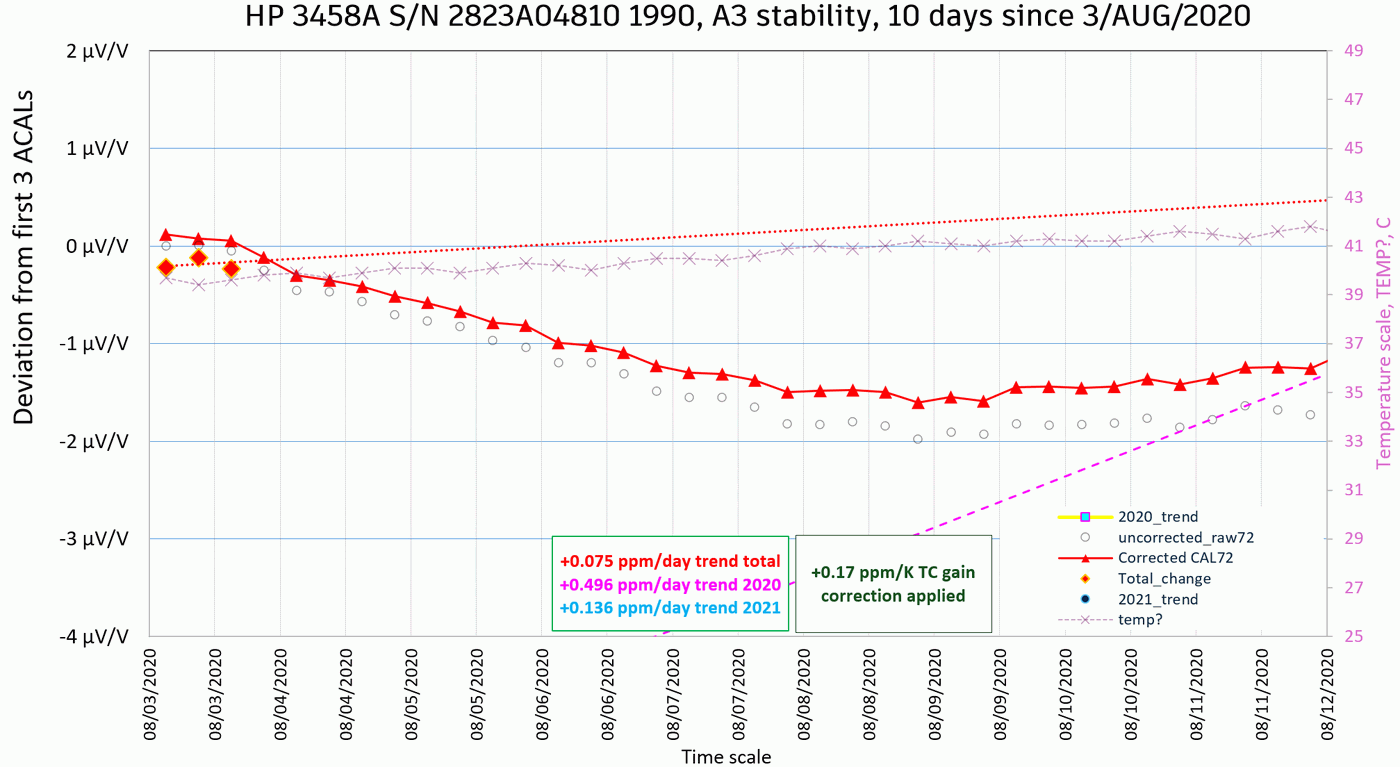
Image 1: X18 stability test result graph for HP3458A S/N 2823A04810 during first 10 days
With these 10 days we can guess than meter initially had visible downward drift down, drifting about -1.5 µV/V after first 6 days or logging. Then it seems to be settled down and provided stable readings? Values changed only by 0.3 µV/V in 4 days later, so that’s +0.3 µV/V / 4 days = +0.075 µV/V. Not too bad, right? Time to open tea, lit up the candles with a present cake and celebrate one more finished repair?
However, it is simply not enough time to obtain a good confidence of 3458A performance when only a week or 10 days of data is collected. Question about the needed shortest duration of stability data for 3458A monitoring is asked again and again, for example to “quickly” check before buying second-hand “working” meter. But answer still the same – supporting the need for weeks, often months of continuous powered up operation with the 3458A. Only lengthy dataset will provide better confidence in stability and performance 3458A capable of. Extending the chart to all data samples with much longer time periods, we obtain a way different picture:
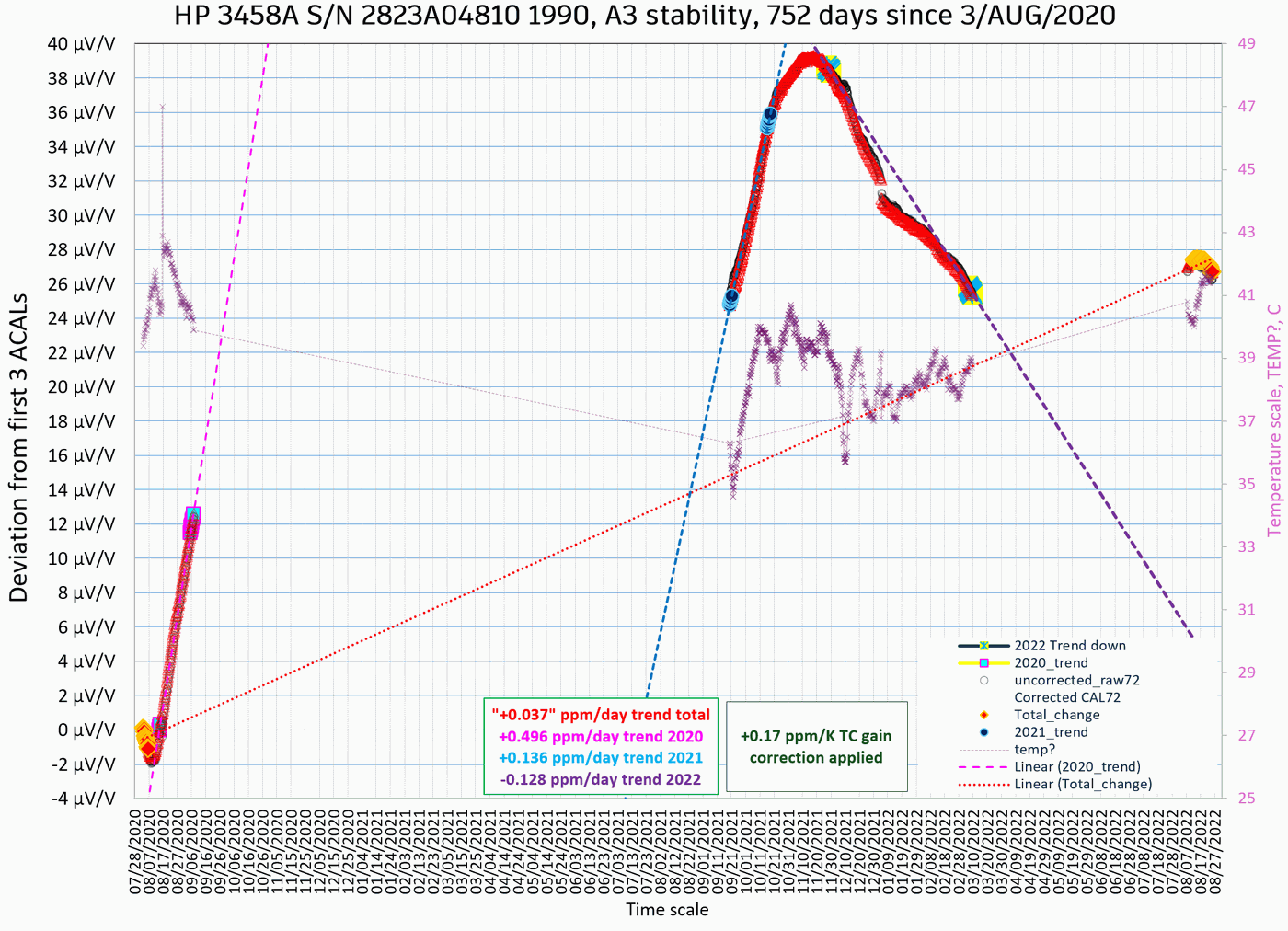
Image 1: Result graph for HP3458A S/N 2823A04810 with all measurements in 2020-2022
Now with larger perspective in the view it is possible to determine that after the first 10 days and over a period of 35 days this DMM developed serious drift at a rate +0.5 µV/V/day. Such drift means that to perform a transfer of same voltage level to uncertainty of ±0.1 µV/V you would need to run ACAL process at least every 2.5 hours. It would be also very interesting to see the INL of this instrument, but we don’t get that data easily.
Second batch of X18 drift measurements was obtained from September 19, 2021 until December 12, 2021. It is possible to see that initial slope returned but with flatter linear trend at +0.39 µV/V/day over 28 days. Later on, drift changed again and started to invert in magnitude. This is also undesired behavior for any possible linear drift corrections since unstable drift require constant evaluation rather than simple data detrending. Third dataset was collected shortly after second and finished in March 9, 2022. And last short dataset was completed from August 7 to August 25 2022.
Overall drift linear trend from first 3 days data obtained on 3 August 2020 and last 5 days of data in August 2022 gives us “good” +0.037 µV/V/day drift but looking at all data in between we see huge non-uniform changes with drift inverting direction midway. This indicate need of the new A3 ADC PCBA for this instrument. The multimeter was unpowered in between the two continuous datasets presented on the plot and that also could have negative impact on the results. In practical approach this A3 drift is bad enough that instrument would go out of it’s annual DC Voltage 10 V relative spec ±8 µV/V in just 56 days if it is used without ACAL.
Experimental 3458A, 2xADR1000 ×9-D reference
Last but not least data from the experimental DMM assembled from various broken and repaired boards from the scratch, with old Gen2 HP-era hardware except the voltage reference. To play with idea of lower noise zener reference original HP 03458-66509 A9 LTZ1000A module was replaced with in-house designed xDevs.com reference module X9-D with not one but two zener chips, new ADR1000. It is essentially a cheaper and simplified version of older 2019 QVR design with half the cell count.
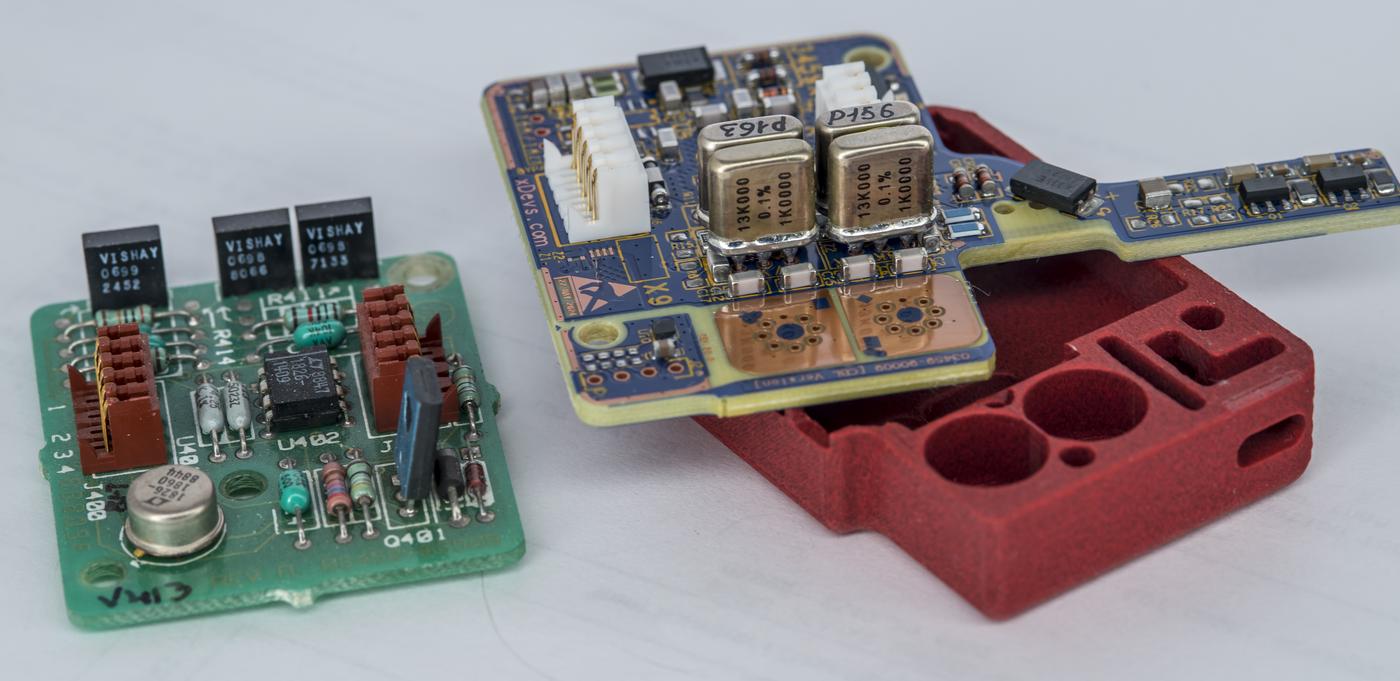
Each of these new chips have much lower noise compared to LTZ1000A and with increased current can demonstrate noise below 200 nV pk-pk in 0.1 – 10 Hz bandwidth.
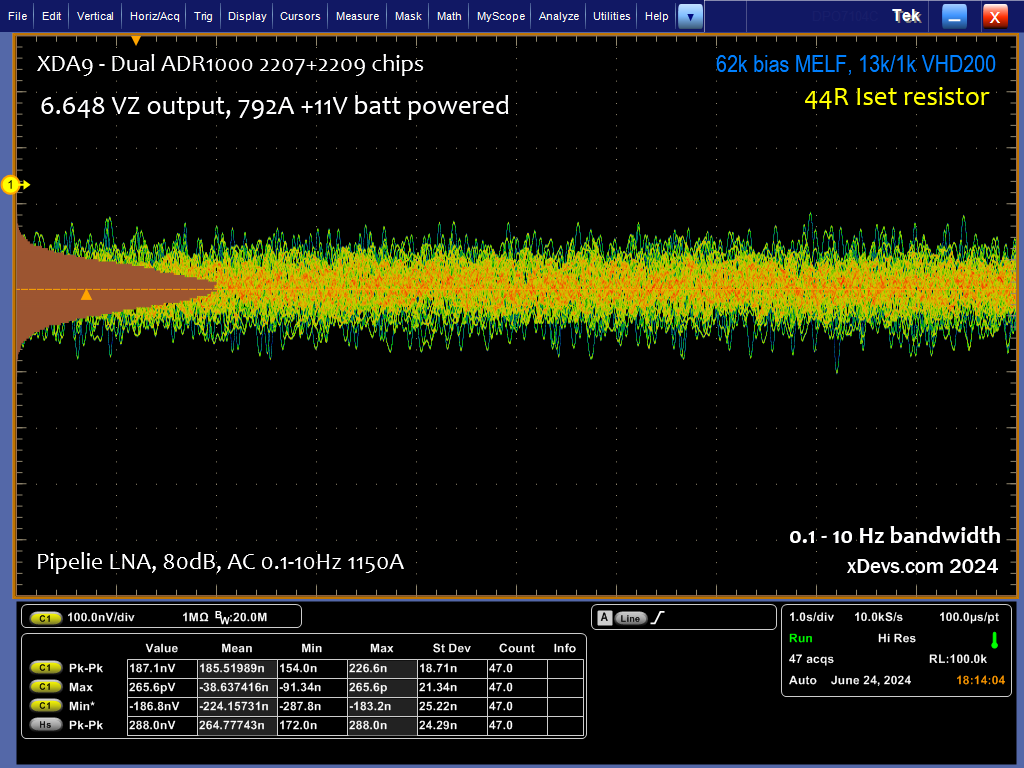
New chips deliver slightly lower output voltage about 6.6V instead of 7.1V so this modified experimental 3458A also have updated firmware to allow use of lower voltage to enable adjustment and self-calibration ACAL functionality. X9-D module is plug and play otherwise and can be used to modify any 3458A, even the newest Gen 6 Keysight RoHS units. Meter was assembled together and repaired June 2024 and been continuously powered up since then, collecting stability data points with the same procedure outlined here, together with other HP3458A on the bench.
Two main questions were investigated – impact of custom X9-D module to ADC stability regarding the CAL? 72 gain coefficient as well as X9-D module stability itself relative to external adjustments against carefully calibrated Fluke 732B 10V standard. Results are available in the chart below. X9-D module was NOT preaged or baked in any way, but installed into the instrument after assembly and brief tempco trim. Brand new chips were purchased directly from the manufacturer with 2022 date codes. They were not selected or conditioned in any way prior to soldering to the PCBA.
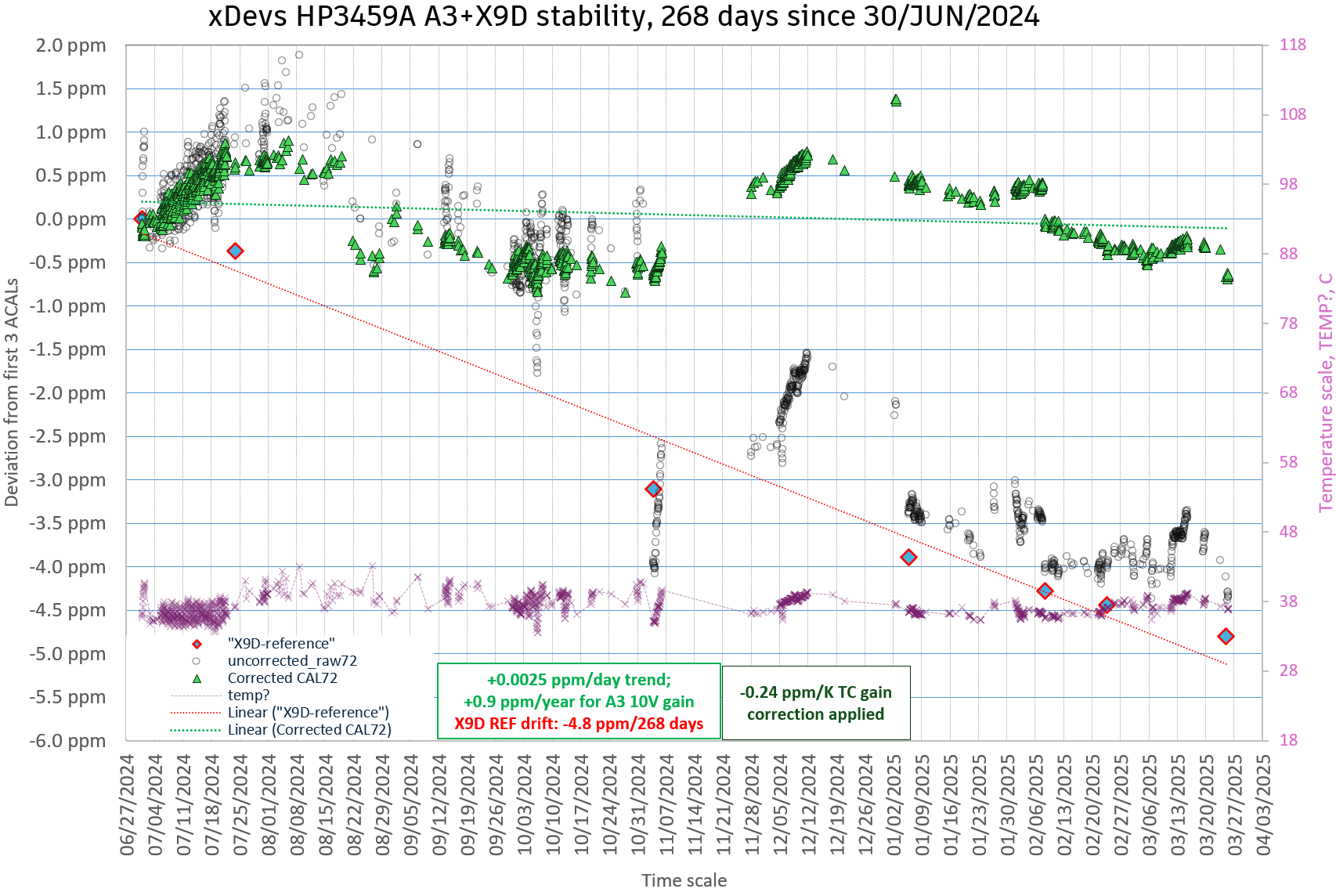
After 268 days X9-D output voltage drifted down -4.8 µV/V which is in line with other ADR1000 chips on our test voltage standard boards. Based on our measurements and results with various modules new ADR1000 drifts a lot at least first 2 years, unlike the older LTZ1000/LTZ1000A zeners which typically reach their typical stability below 1 µV/V/year after first or second month without any special treatment or selection (based on 30+ zeners we built). Going back to A3 ADC gain stability we can see that such modified 3458A can still have good stability below the expected 0.05 µV/V/day and low enough tempco despite the lower reference voltages. This is a good sign and enabling factor for future experiments with lowering noise and improving performance of 3458A design. Hopefully in 2025 there will be more insights of this project towards real 7 digit long-scale DVM performance.
Final criteria of performance based on xDevs.com X18 improved logging and analysis process
Now we can define some numbers and use them to separate excellent performances from the normal ones and from the broken/drifty units.
| Parameter and condition | Verdict per xDevs.com X18 |
|---|---|
| Temperature-corrected CAL? 72 drift is linear and less than ±0.01 µV/V/day | Excellent ADC |
| Temperature coefficient of CAL? 72 is linear and less than ±0.25 µV/V/K | Excellent ADC |
| Max INL error of -11 V to +11 V sweep is less than ±0.05 µV/V* | Excellent ADC |
| Temperature-corrected CAL? 72 drift is linear, more than ±0.01 µV/V/day but less than ±0.05 µV/V/day | Okay ADC |
| Temperature coefficient of CAL? 72 is linear, more than ±0.25 µV/V/K but less than ±0.5 µV/V/K | Okay ADC |
| Max INL error of -11 V to +11 V sweep is less than ±0.1 µV/V* | Okay ADC |
| Temperature-corrected CAL? 72 drift is unstable or more than ±0.05 µV/V/day | ADC needs replacement |
| Temperature coefficient of CAL? 72 is unstable or more than ±0.5 µV/V/K | DMM might need repairs |
| Max INL error of -11 V to +11 V sweep is more than ±0.15 µV/V* | Bad ADC or A1, needs replacement |
Important note – Max INL in table is based on running multiple sweeps relative to no less than three good verified 3458A’s as calibration standard in a stable ±0.5 °C environment. This is rather difficult test to perform quickly. Alternatively INL of 3458A can be tested directly with quantum voltage source such as NIST SRI 6000 PJVS or Supracon system if you have either available in the lab.
Methodology outlined in this X18 test procedure can be used to determine health of A3 assembly with good confidence and estimate temperature sensitivity of various key ranges and functions within the 3458A. Decent data analysis can be performed on a datasets spanning for at lest 30 days and get better with even longer testing. We believe that for the serious applications requiring best 3458A performance there is a clear need to monitor the internal stability of the instrument for further confidence and uncertainty analysis, even when frequent ACAL ALL procedure is implemented to correct for short-term errors.
Isolator failure Error – A3, fiber or A6 assembly, or wrong voltage setting
If main processor from A5 out-guard PCBA cannot communicate with in-guard microcontroller on A3 PCBA via the fiber isolated interface for whatever reason you’ll be greeted with message ISOLATOR FAILURE. It could be something very simple like not fully seated and locked fiber cable between A6 and A3 boards or more elaborate electrical failure. Each fiber cable is terminated with VersaLink type connector. It is even possible to buy fiber cable of this type from Digikey . Very similar fiber cables are also used in Fluke 57xx series instruments and calibrators.
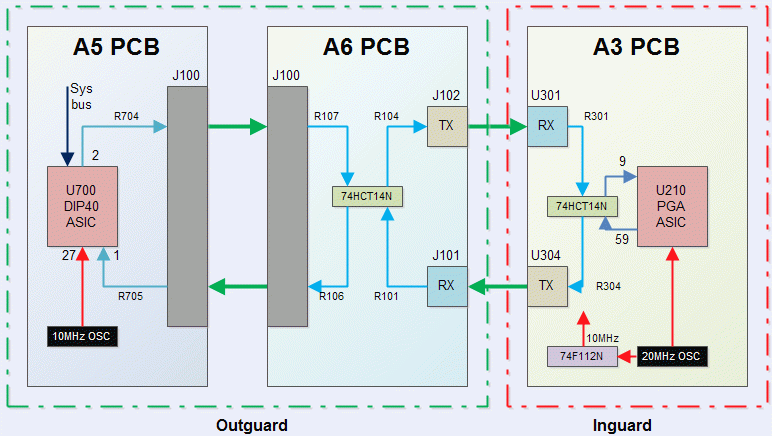
Image 135: Inguard isolation interface block-diagram
The data interface fiber cable is the one routed in the center of the instrument. Two fiber cables exiting near the fan at the back are for external triggering and sync signals and not used for data transfer. Optical cables are based on rather simple POF and relatively robust with used receivers and transmitter for 660 nm light. This is visible red emitted with LED emitters. There is no laser hazard involved around 3458A fiberoptics. It is possible to can see red light on transmitter.
Another possible ISOLATOR FAILURE cause could be incorrect power line voltage setting. If someone forgot voltage switch on 200-220 V range and try to run instrument with low 120V mains voltage, reduced voltage from power transformer would cause failure of A3 to main CPU communication and trigger ISOLATOR FAILURE fault. Switching to correct voltage should rectify this problem without damage to the instrument. However, running meter with 200+V mains while switches configured to 100-120 V may cause permanent damage to A4 power supply board and transformer, which would be expensive repair. Thanks to Isaac aka “neverendingstudent” for the hint on this failure mode.
DCI 1/10 µA failure during ACAL ALL
One of our readers Amer S. contacted about failure during run of ACAL ALL process on his Agilent 3458A. Issue reported was on 1/10 µA range fail. Sometimes instrument was still passing ACAL ALL, so it was somewhat intermittent issue. Amer troubleshooted his instrument and noticed that on A1 PCBA one of the switches Q205 was stuck at close to zero volts at the gate voltage instead of correct operation, when switching meter manually in various current measurement ranges from front panel. Measuring U205 LM393 comparator output provided correct voltage level at 5V on pin 3 (for 10nA range DCI) but the output of pin 1 was around zero. Further investigation and replacing comparator didn’t improve situation and even made U203 outputs bad as well. Replacement of shift register CD4094BE and U203,U205 fixed the issues and meter now passing ACAL ALL without any problems.
Hardware Fault 205: Test Value Out of Range N error
This error message with N equal to some number indicates that a self-diagnostics or ACAL test did not meet fall within pre-defined firmware fixed min/max limits. The number displayed next to the message usually indicates the calibration coefficient limit that was exceeded during the test. Full list of calibration constants is available on pages 91 to 102 in the 3458A Multimeter Calibration Manual, Edition 7 or newer RoHS revised variant (constants are identical across all generations).
The number can be used to determine the assembly that caused the test to fail. Numbers from 62 through 189 often indicate a failure on the DC Circuitry A1 PCBA. Numbers from 190 and above indicate a failure on the AC Converter A2 PCB assembly. Few of the typical faults and causes we will look into closer in the next sections.
NONVOLATILE RAM HIGH or NONVOLATILE RAM LOW Errors – A5 NVRAM issues
These errors are triggered by depleted battery inside non-volatile memory modules on main CPU board. Old HP A5 CPU boards have two NVRAM chips, originally Dallas DS1230 in EDIP package, while newer refreshed A5 CPU boards come with SMT RAM chips designed to use expensive yellow SnapHat M4Z32-BR00SH1 battery backup. There is simple 3V lithium primary coin cell in either of these solutions which eventually discharge below the acceptable voltage level to keep RAM operating. This is 5 minute repair for newer A5 done by replacing SnapHat battery with DMM POWERED and RUNNING to avoid data loss. Older HP A5 PCBAs with Dallas chips repaired similar way but with desoldering old bad chips, populating PCB with nice collet sockets, such as two Mill-max 110-47-628-41-001000 and one Mill-max 110-47-624-41-001000 . Suitable memory chip replacements are Analog Devices DS1230AB and DS1220AB for calibration memory. Typical life of these NVRAMs is about 5-7 years from the date of manufacturing.
There is also more elaborate method without using battery-backed memory but with ferroelectric type RAM . This involve sourcing obsolete DIP-packaged FRAM chips or tinkering with SMT/DIP adapters and was explained before in good detail by following this article . Newer Keysight CPU boards such as 03458-66547 gone away from using expensive SnapHat battery modules and use standard 2032 coin cell holder for SRAM backup power. Same coin cell battery holder used even on latest RoHS A5 hardware with Xilinx FPGA (P/N 03458-66675).
Flatness DAC Convergence Error – A2 assembly
Slave Test: Convergence Error
Older firmware such as Rev.8 and below are not compatible with new RoHS LF A3 boards. Instrument would mostly work but will fail self-test diagnostics right at the beginning with SLAVE CONVERGENCE ERROR. Please verify that your instrument has latest Rev.9 firmware (can be checked with REV? command from front panel or GPIB-bus) if you are running newer RoHS A3 PCBAs with ALTERA FPGA logic chip.
Internal TEMP? temperature different to ambient is over 16 degrees
DMM has internal temperature sensor located on the A1 PCBA towards the center of the instrument. This sensor can be read and digitized by main ADC by issue of TEMP? command and reading the result in the next sample. DMM will perform internal switching to the tempreature sensor, measure it’s output and then return to previous function/mode of operation. Keep in mind that this internal switching can cause significant errors if instrument is measuring high DC voltages (>12 V) or performing AC voltage measurements. It is not recommended to utilize TEMP? when performing those measurements.
Monitoring TEMP? and keeping track of this sensor readout is very useful if operator desire to achieve best performance out of 3458A. Often calibration certificate would indicate this TEMP? value at the time of adjustment to provide user with ability to obtain better uncertainty when instrument is kept at the same temperature as it was during the external calibration. If TEMP? reading is also in excess of +16 °C from ambient temperature it can also indicate cooling fan failure or clogged filter at the back of the unit. Good temperature differential between ambient and TEMP? reading is about 10-12 °C. Since 3458A’s power consumption is relatively constant TEMP? reading can be also used to monitor ambient temperature variations if external ambient temperature datalogging is not yet available in the lab.
Unexpected Slave Processor Reset error
This error is usually happens when power surge or very short mains power interruption occured. It’s usually not a problem and can be easily cleared up manually after meter is returned to normal operation. However if this error happens often it could indicate to power delivery issues and would warrant a look on A4 and A6 power regulators, perhaps also replacement for electrolytic capacitors on these boards.
Keysight service agreement and repair services
If you give up and/or feel like you need a guaranteed working instrument, one other option is also available for 3458A. This would be contacting Keysight and shipping them DMM as a whole to get the DMM fixed up at the local Keysight Service Center. This usually has fixed price (about ~$3.8k USD) and usually includes diagnosis and correction of all product malfunctions and failures often by assembly level replacements, all necessary parts, materials and use of new or like-new genuine Keysight parts plus some preventative maintenance including cleaning, lubricating and safety checks. Depending on service order full or partial calibration (depending on region) is also performed after repairs and included in cost.
For full details you can contact your nearest Keysight representative or FAE. There is also annual service/warranty agreement is available for 3458A which often include annual calibration at discounted rate and cheaper repair service if instrument develop a failure during the warranted period of the agreement. If you have critical application that depends on well working 3458A it could be good cost-saving option.
Calibration and performance verifications
TBD
Internal xDevs.com calibration methods for 3458A
TBD.
Keysight standard calibration service
Keysight offer number of grades for 3458A DMM calibration designed to fit the needs (and resources) of most customers that would send 3458A in for service. Cheapest options is usually around $1k USD and can be obtained at number of the locations world-wide, as well as partner calibration providers. More expensive options include additional uncertainty with data points measured for each function and range and guardbanding. If legal traceability and laboratory accreditation is required such options also available for ANSI Z540-1-1994 or 17025 certification. For large customers Keysight can provide on-site services as well with their mobile calibration facilities.
Keysight option OGC calibration
Keysight offers special “Golden” calibration service for 3458A DMMs. It is also known as option OGC if you are ordering brand new instruments from Keysight with need of this calibration. Typical cost for this calibration is at least $2.7k USD which is almost double to normal calibration with uncertainties and data. Normally golden calibration service is done only by Keysight Primary standards laboratory in Loveland, CO or at main 3458A production factory in Penang, Malaysia for Asia region.
Unlike the typical standard or 17025 accredited calibration for 3458A which is done with 90-day spec reference 3458A, high-performance calibrator like Fluke 5720A/5730A and 5725A amplifier such golden calibration require much more manual work and fixed high performance standards for the critical ranges and points. Typical list of equipment needed for such a calibration is presented in example table below, taken from actual OGC calibration for one of the old HP3458A units. Environment for this calibration also has tight control at +23 °C ±0.5 °C temperature and 30 to 50 %%RH unlike more relaxed ±5 °C and ±30 %%RH for standard calibration services.
| Model, vendor | Description of the standard | Calibration point |
|---|---|---|
| Guildline 9334A-0.1 | 0.1 Ohm Standard Resistor | 1 A current range |
| Fluke 742A-1 | Resistance Standard | 100 mA current range |
| Fluke 742A-10 | Resistance Standard | 10 Ω range and 10 mA current range |
| Fluke 742A-100 | Resistance Standard | 100 Ω range and 1 mA current range |
| Fluke 742A-1K | Resistance Standard | 1000 Ω range |
| ESI SR104 | Primary Standard Resistor | 10 kΩ range and 100 µA current range |
| Fluke 742A-100K | Resistance Standard | 100 kΩ range and 10 µA current range |
| Fluke 742A-1M | Resistance Standard | 1 MΩ range and 1 µA current range |
| Fluke 742A-10M | Resistance Standard | 10 MΩ range and 100 nA current range |
| Guildline 9334-100M | Standard Resistor | 100 MΩ range |
| Guildline 9334A-1G | Standard Resistor | 1 GΩ range |
| Fluke 5790A | AC Measurement Standard | ACV and ACI functions |
| HP3458A | Digital multimeter, 8.5 digit | Check standard |
| Keysight ET 10mV | AC Divider | ACV functions for 10 mV AC range |
| Keysight ET 100mV | AC Divider | ACV functions for 100 mV AC range |
| Keysight 33622A | Waveform generator 33600A Series, 120 MHz, 2-channel | AC voltage functions, frequency, timing |
| Fluke 732C | 10 V DC Voltage Standard | DC Voltage ranges |
| Fluke 5720A Calibrator | Source | Voltage/current source functions |
| Fluke 5725A Amplifier | Source | High Voltage source |
Outcome of such calibration is the instrument that is verified to perform to the best of the capabilities suitable for most demanding metrology applications, such as calibrating other 8½-digit instruments or be used in metrology laboratory. Keysight provides few samples of how such report would look like:
Sample Primary Standards Laboratory OGC Calibration certificate for 3458A
Sample Primary Standards Laboratory OGC Calibration data for 3458A
Repaired instruments worklog summary
I’ve collected a small database of various old 3458A’s to back the experiences described in this article as well as provide some actual performance values related to the instruments in question. If you want to add your 3458A information into the table for everyone’s reference please reach out at team[sign]xdevs.com or via IRC (xDevs.com, port 6010). It would be nice to have a dataset with results from these DMMs from different ages and serial number batches.
| S/N | Generation, options, year | Condition as of 2024 | X18 CAL 72 drift | Tempco 10 V DCV gain | Calibrated | Additional notes |
|---|---|---|---|---|---|---|
| 2823A04810 | Gen 2, 002, 1990 | Unstable | +0.5 to +0.075 µV/V/day | +0.17 µV/V/K | Large drift with unstable slopes | |
| 2823A13345 | Gen 2 (mixed), 001,X02, 1996(A1),1996(A3) | Stable, xDevs standard | +0.001 µV/V/day | +0.08 µV/V/K | YES, 5.JAN.2025 | A9 mod , 24/7 power since Jan.2016 |
| MY45040325 | Gen 2 (mixed), X02, 1999(A1),2016(A3) | Stable, xDevs LN standard | +0.003 µV/V/day | +0.042 µV/V/K | YES, 5.JAN.2025 | A9 mod , low noise, 24/7 on since Jan.2017 |
| 2823A????? MiDi’s unit | Gen 2, 002 | Working good | +0.016 µV/V/day | -0.359 µV/V/K | Almost no drift since mid-2023 | |
| 2823A17282 GPIB4 | Gen 2, 001 | Working good | +0.011 µV/V/day | +0.03 µV/V/K | YES | Almost no DCV TC |
| 2823A20931 GPIB3 | Gen 2, 001,002 | Working good | -0.021 µV/V/day | +0.07 µV/V/K | YES | Excellent DCV TC |
| 2823A21408 GPIB5 | Gen 3, 001 | Working good | -0.042 µV/V/day | +0.25 µV/V/K | YES | |
| 2823A27039 | Gen 3, HFL | Working good | -0.???? µV/V/day | -0.??? µV/V/K | YES | |
| MY4505XXXX | Gen 4, 002, August 2016 | Good unit, friendly lab | +0.004 µV/V/day | +0.17 µV/V/K | ||
| MY59350622 | Gen 5, 001 | Demo unit from Keysight | … | … | YES, 8.FEB.2022 | Demo unit loaner, Jan 2020 |
Summary and conclusion
Also my appreciation goes to Todd M., Tom K., Igor O., Dr.Frank, Colby, Kleinstein, plesa, MiDi, Leigh C., ExtraSolar, branadic and everyone else who provided great support and suggestions to make these 3458A happy again. None of this would happen without great volt-nut community all over the globe. May the Volt be with you. Hopefully this guide will help to bring more old and neglected 3458A’s back to life, instead of filling landfills.
Projects like this are born from passion and a desire to share how things work. Education is the foundation of a healthy society - especially important in today's volatile world. xDevs began as a personal project notepad in Kherson, Ukraine back in 2008 and has grown with support of passionate readers just like you. There are no (and never will be) any ads, sponsors or shareholders behind xDevs.com, just a commitment to inspire and help learning. If you are in a position to help others like us, please consider supporting xDevs.com’s home-country Ukraine in its defense of freedom to speak, freedom to live in peace and freedom to choose their way. You can use official site to support Ukraine – United24 or Help99. Every cent counts.
Modified: Dec. 12, 2025, 6:58 a.m.
References
- 3458A A3 U180 chip logic die high-resolution photograph
- GPIB and programming for HP3458A
- Keysight 3458A product page
- Restoration worklog for HP 3458A
- Second 3458A repair
- Third 3458A repair
- Forth HP3458A repair
- Buildling improved 3458A out of the scrap donor parts
- HP/Fluke 3458HFL repair and tests
- TheSignalPath : repair and experiments with 3458A
- TheSignalPath : Repair and experiments with 2nd Agilent 3458A
- Dr.Frank's method to test tempco of 3458A
- Marco Reps: HP 3458A - Why is this 31 year old Multimeter UNRIVALLED?
- Marco Reps: What has Keysight done to 3458A?! Dark Theme 8.5 Digit Multimeter
- Video : Service of two 8.5-digit HP / Agilent / Keysight 3458A multimeters
- Dual-zener low-noise ADR1000 X9-D module for 3458A

